CLEANLINESS

Cleanliness is both the abstract State of being clean and free from
dirt, and the process of achieving and maintaining that State.
Cleanliness may be endowed with a moral quality, as indicated by the
aphorism "cleanliness is next to godliness," and may be regarded as
contributing to other ideals such as health and beauty.
In emphasizing an ongoing procedure or set of habits for the purpose
of maintenance and prevention, the concept of cleanliness differs
from purity, which is a physical, moral, or ritual State of freedom
from pollutants. Whereas purity is usually a quality of an
individual or substance, cleanliness has a social dimension, or
implies a system of interactions. "Cleanliness," observed Jacob
Burckhardt, "is indispensable to our modern notion of social
perfection." A household or workplace may be said to exhibit
cleanliness, but not ordinarily purity; cleanliness also would be a
characteristic of the people who maintain cleanness or prevent
dirtying.
On a practical level, cleanliness is thus related to hygiene and
disease prevention. Washing is one way of achieving physical
cleanliness, usually with water and often some kind of soap or
detergent. Procedures of cleanliness are of utmost importance in
many forms of manufacturing.

As an assertion of moral superiority or respectability, cleanliness
has played a role in establishing cultural values in relation to
social class, humanitarianism, and cultural imperialism.
In Islam
There are many verses in the Quran which discuss cleanliness. For
example, “…Truly, Allah loves those who turn to Him constantly and
He loves those who keep themselves pure and clean” (2:222). And,
“…In mosque there are men who love to be clean and pure. Allah loves
those who make themselves clean and pure” (9:108).
Hinduism
In Hinduism,cleanliness is an important virtue, and all Hindus must
have taken a bath before entering temples in order to seek
blessings.They also wash their feet before entering the temple as
according to the Puranas,the demon kali is believed to reside on the
hind of the feet.In some Orthodox hindu households,taking a bath
after visiting a funeral is required as some hindus believe that it
is an inauspicious thing to witness and the inauspiciousness would
follow.This is also related to the pollution of the River Ganges.
Hindus also clean their homes particularly well in preparing to
celebrate Diwali each year as they believe that it brings good luck
.Most Hindus also believe that keeping your house clean and great
devotion are gestures to welcome the Goddess Lakshmi to their abode
to stay.Some orthodox hindus refrain from cleaning their houses on a
Friday as it is a day dedicated to Goddess Lakshmi and cleaning
homes on that day is considered inauspicious,so they are allowed to
clean their homes on the rest of the days. Tamil people also keep
their homes clean in preparation for pongal(see Bhogi Pandigai).

Hygiene
Since the germ theory of disease, cleanliness has come to mean an
effort to remove germs and other hazardous materials. A reaction to
an excessive desire for a germ-free environment began to occur
around 1989, when David Strachan put forth the "hygiene hypothesis"
in the British Medical Journal. In essence, this hypothesis
holds that dirt plays a useful role in developing the immune system;
the fewer germs people are exposed to in childhood, the more likely
they are to get sick as adults. The valuation of cleanliness,
therefore, has a social and cultural dimension beyond the
requirements of hygiene for practical purposes.
Industry
In industry, certain processes such as those related to integrated
circuit manufacturing, require conditions of exceptional cleanliness
which are achieved by working in cleanrooms. Cleanliness is
essential to successful electroplating, since molecular layers of
oil can prevent adhesion of the coating. The industry has developed
specialized techniques for parts cleaning, as well as tests for
cleanliness. The most commonly used tests rely on the wetting
behaviour of a clean hydrophillic metal surface. Cleanliness is also
important to vacuum systems to reduce outgassing. Cleanliness is
also crucial for semiconductor manufacturing.

What is Hygiene ?
Hygiene (which comes from the name of the Greek goddess of health,
Hygieia), is a set of practices performed
for the preservation of health.
Whereas in popular culture and parlance it can often mean mere
'cleanliness', hygiene in its fullest and original meaning goes much
beyond that to include all circumstances and practices, lifestyle
issues, premises and commodities that engender a safe and healthy
environment. While in modern medical sciences
there is a set of standards of hygiene recommended for different
situations, what is considered hygienic or not can vary between
different cultures, genders
and etarian groups. Some regular
hygienic practices may be considered good habits
by a society while the neglect of hygiene can be considered
disgusting, disrespectful or even threatening.
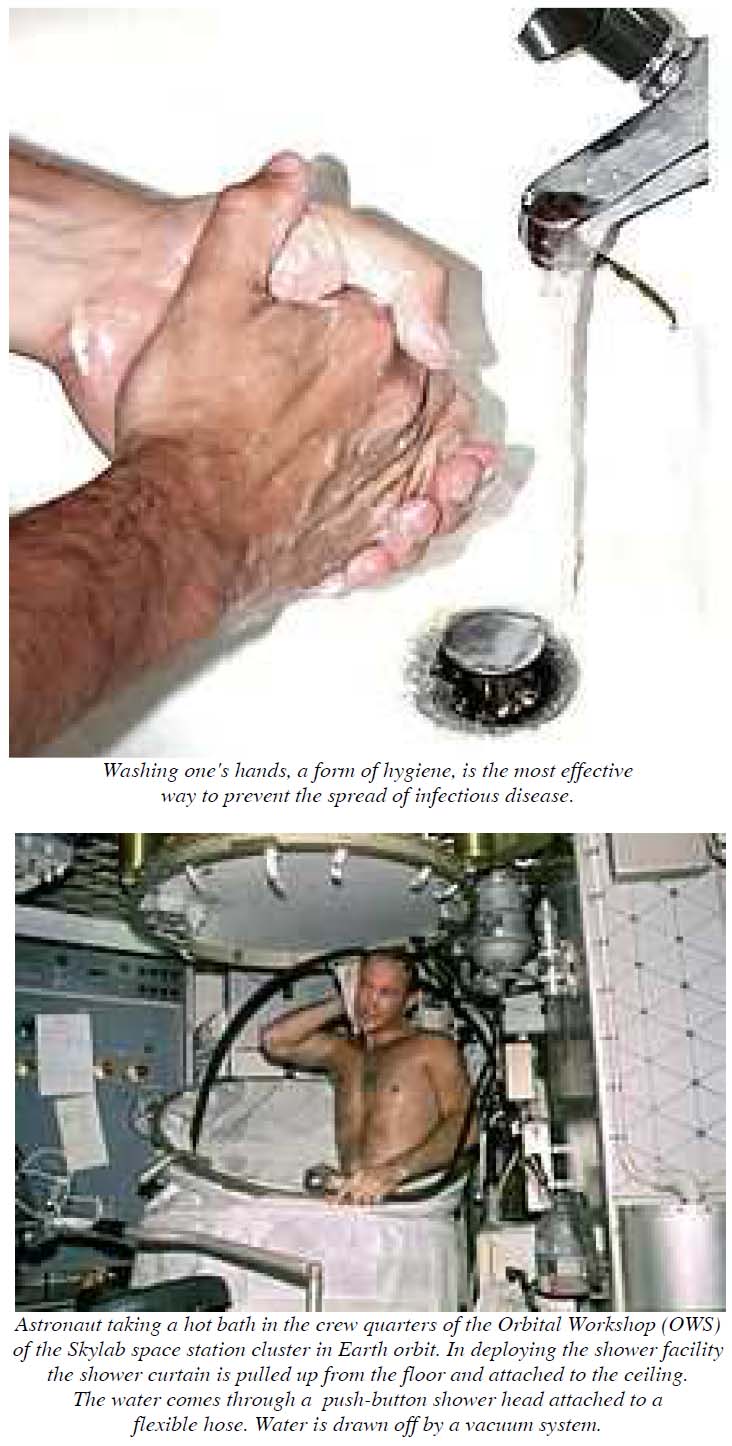
Sanitation in its current US popular
meaning is often (incorrectly) taken to be merely the hygienic
disposal and treatment by the civic authority of potentially
unhealthy human waste, such as
household garbage and sewage, and the maintenance of the sewerage
and drainage infrastructure. In the UK the term 'sanitation' has
unfortunately come closer to meaning water and waste plumbing and
disposal, and it is not used to include garbage collection and
disposal. The full and proper meaning of 'sanitation' is closer to
the full meaning of 'hygiene' and includes the control of water and
air quality; vectors; healthful housing; safe products; safe food
and working conditions. The more recent broad term 'environmental
health' equates to the original meaning of sanitation.
First attested in English in 1677s, the word hygiene comes
from the
French hygiene, the
latinisation of the Greek
ὑγιεινή (τέχνη) hugieinē technē, meaning "(art) of health",
from ὑγιεινός hugieinos, "good for the health, healthy", in
turn from ὑγιής (hugiēs), "healthful, sound, salutary,
wholesome". In ancient Greek religion,
Hygeia (Ὑγίεια) was the
personification of health.

Concept of hygiene
Hygiene is an old concept related to medicine, as well as to
personal and professional care practices related to most aspects of
living. In medicine and in home (domestic) and everyday life
settings, hygiene practices are employed as preventative measures to
reduce the incidence and spreading of disease. In the manufacture of
food, pharmaceutical, cosmetic and other products, good hygiene is a
key part of
quality assurance i.e. ensuring that the
product complies with microbial specifications appropriate to its
use. The terms cleanliness (or
cleaning) and hygiene are often used interchangeably, which can
cause confusion. In general, hygiene mostly means practices that
prevent spread of disease-causing organisms. Since cleaning
processes (e.g., hand washing) remove infectious microbes as well as
dirt and soil, they are often the means to achieve hygiene. Other
uses of the term appear in phrases including: body hygiene,
personal hygiene, sleep hygiene,
mental hygiene, dental
hygiene,
and occupational hygiene,
used in connection with public health.
Hygiene is also the name of a branch of science that deals
with the promotion and preservation of health, also called hygienic.
Hygiene practices vary widely, and what is considered acceptable in
one culture might not be
acceptable in another.
Medical hygiene
Medical hygiene pertains to the hygiene practices related to the
administration of medicine, and medical care, that prevents or
minimizes disease and the spreading of disease.
Medical hygiene practices include:
-
Isolation
or
quarantine
of infectious persons or materials to prevent spread of
infection.
-
Sterilization
of instruments used in
surgical procedures.
-
Use of protective
clothing and barriers, such as
masks,
gowns,
caps,
eyewear
and
gloves.
-
Proper
bandaging
and
dressing
of
injuries.
-
Safe
disposal
of
medical waste.
-
Disinfection of
reusables (i.e. linen, pads, uniforms)
-
Scrubbing up,
hand-washing, especially in an operating room, but in more
general health-care settings as well, where diseases can be
transmitted
Most of these practices were developed in the 19th century and were
well established by the mid-20th century. Some procedures (such as
disposal of
medical waste) were refined in response
to late-20th century disease outbreaks, notably AIDS
and Ebola.

Home and everyday life hygiene
Home hygiene pertains to the hygiene practices that prevent or
minimize disease and the spreading of disease in home (domestic) and
in everyday life settings such as social settings, public transport,
the work place, public places etc.
Hygiene in home and everyday life settings plays an important part
in preventing spread of infectious diseases. It includes procedures
used in a variety of domestic situations such as hand hygiene,
respiratory hygiene, food and water hygiene, general home hygiene
(hygiene of environmental sites and surfaces), care of domestic
animals, and home healthcare (the care of those who are at greater
risk of infection).
At present, these components of hygiene tend to be regarded as
separate issues, although all are based on the same underlying
microbiological principles. Preventing the spread of infectious
diseases means breaking the chain of infection transmission. The
simple principle is that, if the chain of infection is broken,
infection cannot spread. In response to the need for effective codes
of hygiene in home and everyday life settings the International
Scientific Forum on Home Hygiene has developed a
risk-based approach (based on Hazard
Analysis Critical Control Point (HACCP),
which has come to be known as "targeted hygiene". Targeted hygiene
is based on identifying the routes of spread of pathogens in the
home, and applying hygiene procedures at critical points at
appropriate times to break the chain of infection.
The main sources of infection in the home are people (who are
carriers or are infected), foods (particularly raw foods) and water,
and domestic animals (in western countries more than 50% of homes
have one or more pets). Additionally, sites that accumulate stagnant
water—such as sinks, toilets, waste pipes, cleaning tools, face
cloths—readily support microbial growth, and can become secondary
reservoirs of infection, though species are mostly those that
threaten "at risk" groups.
Germs (potentially infectious bacteria,
viruses etc.) are constantly shed from these sources via mucous
membranes, faeces, vomit, skin scales, etc. Thus, when circumstances
combine, people become exposed, either directly or via food or
water, and can develop an infection. The main "highways" for spread
of germs in the home are the hands, hand and food contact surfaces,
and cleaning cloths and utensils. Germs can also spread via clothing
and household linens, such as towels. Utilities such as toilets and
wash basins, for example, were invented for dealing safely with
human waste, but still have risks associated with them, which may
become critical at certain times, e.g., when someone has sickness or
diarrhea. Safe disposal of human waste is a fundamental need; poor
sanitation is a primary cause of
diarrhea disease in low income communities. Respiratory viruses and
fungal spores are also spread via the air.
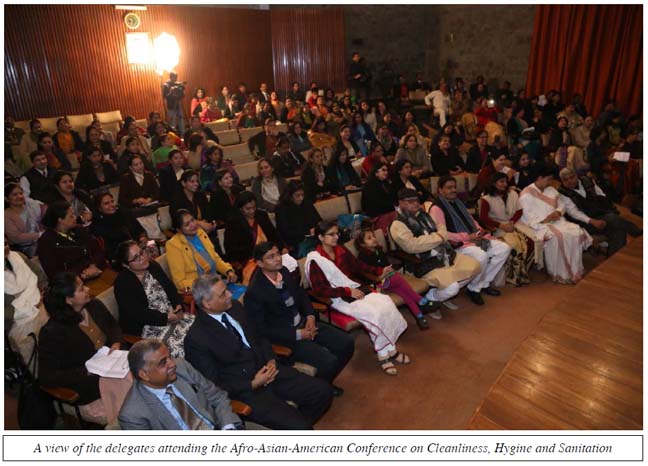
Good home hygiene means targeting hygiene procedures at critical
points, at appropriate times, to break the chain of infection i.e.
to eliminate germs before they can spread further. Because the
"infectious dose" for some pathogens can be very small (10-100
viable units, or even less for some viruses), and infection can
result from direct transfer from surfaces via hands or food to the
mouth, nasal mucosa or the eye, 'hygienic cleaning' procedures
should be sufficient to eliminate pathogens from critical surfaces.
Hygienic cleaning can be done by:
-
Mechanical removal
(i.e. cleaning) using a
soap or
detergent.
To be effective as a hygiene measure, this process must be
followed by thorough rinsing under running water to remove germs
from the surface.
-
Using a process or
product that inactivates the pathogens in situ. Germ kill is
achieved using a "micro-biocidal" product i.e. a
disinfectant
or
antibacterial
product or
waterless hand sanitizer,
or by application of heat.
In some cases combined germ removal with kill is used, e.g.
laundering of clothing and household linens such as towels and
bedlinen.
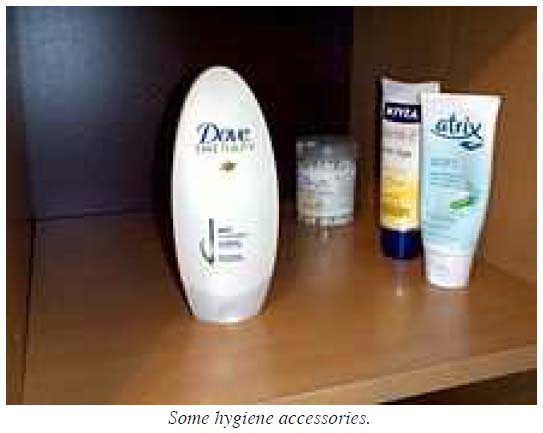
Hand hygiene
Hand hygiene is defined as
hand washing or washing hands and nails
with soap and water or using a waterless hand sanitizer.
Hand hygiene is central to preventing spread of infectious diseases
in home and everyday life settings.
In situations where hand washing with soap is not an option (e.g.
when in a public place with no access to wash facilities), a
waterless hand sanitizer such as an
alcohol hand gel can be used. They
can also be used in addition to hand washing, to minimize risks when
caring for "at risk" groups. To be effective, alcohol hand gels
should contain not less than 60%v/v alcohol. Hand sanitizers are not
an option in most developing countries. In situations with limited
water supply, there are water-conserving solutions, such as tippy-taps.
(A tippy-tap is a simple technology using a jug suspended by a rope,
and a foot-operated lever to pour a small amount of water over the
hands and a bar of soap.) In low-income communities, mud or ash is
sometimes used as an alternative to soap.

The World Health Organization recommends hand washing with ash if
soap is not available in emergencies, schools without access to
soap and other difficult situations like post-emergencies where use
of (clean) sand is recommended too. Use of ash is common and has in
experiments been shown at least as effective as soap for removing
bacteria.
Respiratory hygiene
Correct respiratory and
hand hygiene when coughing and sneezing
reduces the spread of germs particularly during the cold
and flu season.
-
Carry tissues and use
them to catch coughs and sneezes
-
Dispose of tissues as
soon as possible
-
Clean your hands by
hand washing
or using an alcohol
hand sanitizer.
Food hygiene at home
Food hygiene is concerned with the hygiene practices that prevent
food poisoning. The five key principles of food hygiene, according
to
WHO, are:
1.
Prevent contaminating food with mixing chemicals spreading from
people, pets, and pests.
2.
Separate raw and cooked foods to prevent contaminating the cooked
foods.
3.
Cook foods for the appropriate length of time and at the appropriate
temperature to kill pathogens.
4.
Store food at the proper temperature.
5.
Use safe water and raw materials
Household water treatment and safe storage
Household water treatment and safe storage ensure drinking water is
safe for consumption.
Drinking water quality remains a
significant problem, not only in developing countries but also in
developed countries; even in the European region it is estimated
that 120 million people do not have access to safe drinking
water. Point-of-use water quality
interventions can reduce diarrheal disease in communities where
water quality is poor, or in emergency situations where there is a
breakdown in water supply. Since water can become contaminated
during storage at home (e.g. by contact with contaminated hands or
using dirty storage vessels), safe storage of water
in the home is also important.

Methods for treatment of drinking water, include:
1.
Chemical disinfection using chlorine or iodine
2.
Boiling
3.
Filtration using ceramic filters
4.
Solar disinfection - Solar disinfection is an effective method,
especially when no chemical disinfectants are available.
5. UV
irradiation - community or household UV systems may be batch or
flow-though. The lamps can be suspended above the water channel or
submerged in the water flow.
6.
Combined flocculation/disinfection systems – available as sachets of
powder that act by coagulating and flocculating sediments in water
followed by release of chlorine.
7.
Multibarrier methods – Some systems use two or more of the above
treatments in combination or in succession to optimize efficacy.
Hygiene in the kitchen, bathroom and toilet
Routine cleaning of (hand, food and drinking water) sites and
surfaces (such as toilet seats and flush handles, door and tap
handles, work surfaces, bath and basin surfaces) in the kitchen,
bathroom and toilet reduces the risk of spread of germs. The
infection risk from the toilet itself is not high, provided it is
properly maintained, although some splashing and aerosol formation
can occur during flushing, particularly where someone in the family
has diarrhea. Germs can survive in the scum or scale left behind on
baths and wash basins after washing and bathing.
Water left stagnant in the pipes of showers can be contaminated with
germs that become airborne when the shower is turned on. If a shower
has not been used for some time, it should be left to run at a hot
temperature for a few minutes before use.

Thorough cleaning is important in preventing the spread of fungal
infections. Molds can live on wall and floor tiles and on shower
curtains. Mold can be responsible for infections, cause allergic
responses, deteriorate/damage surfaces and cause unpleasant odors.
Primary sites of fungal growth are inanimate surfaces, including
carpets and soft furnishings. Air-borne fungi are usually associated
with damp conditions, poor ventilation or closed air systems.
Cleaning of toilets and hand wash facilities is important to prevent
odors and make them socially acceptable. Social acceptance is an
important part of encouraging people to use toilets and wash their
hands.
Laundry hygiene
Laundry hygiene pertains to the practices that prevent or minimize
disease and the spreading of disease via soiled clothing and
household linens such as towels. Items most likely to be
contaminated with pathogens are those that come into direct contact
with the body, e.g., underwear, personal towels, facecloths,
nappies. Cloths or other fabric items used during food preparation,
or for cleaning the toilet or cleaning up material such as faeces or
vomit are a particular risk.

Microbiological and epidemiological data indicates that clothing and
household linens etc. are a risk factor for infection transmission
in home and everyday life settings as well as institutional
settings, although the lack of quantitative data directly linking
contaminated clothing to infection in the domestic setting makes it
difficult to assess the extent of the risk. Although microbiological
data indicates that risks from clothing and household linens are
somewhat less than those associated with hands, hand contact and
food contact surfaces, and cleaning cloths, nevertheless these risks
needs to be appropriately managed through effective laundering
practices. In the home, this routine should be carried out as part
of a multibarrier approach to hygiene which also includes hand,
food, respiratory and other hygiene practices.
Infection risks from contaminated clothing etc. can increase
significantly under certain conditions. e.g. in healthcare
situations in hospitals, care homes and the domestic setting where
someone has diarrhoea, vomiting, or a skin or wound infection. It
also increases in circumstances where someone has reduced immunity
to infection.
Hygiene measures, including laundry hygiene, are an important part
of reducing spread of antibiotic resistant strains. In the
community, otherwise healthy people can become persistent skin
carriers of MRSA, or faecal carriers of enterobacteria strains which
can carry multi-antibiotic resistance factors (e.g. NDM-1 or ESBL-producing
strains). The risks are not apparent until, for example, they are
admitted to hospital, when they can become “self infected” with
their own resistant organisms following a surgical procedure. As
persistent nasal, skin or bowel carriage in the healthy population
spreads “silently” across the world, the risks from resistant
strains in both hospitals and the community increases. In particular
the data indicates that clothing and household linens are a risk
factor for spread of S. aureus (including MRSA and PVL-producing
MRSA strains), and that effectiveness of laundry processes may be an
important factor in defining the rate of community spread of these
strains. Experience in the USA suggests that these strains are
transmissible within families, but also in community settings such
as prisons, schools and sport teams. Skin-to-skin contact (including
unabraded skin) and indirect contact with contaminated objects such
as towels, sheets and sports equipment seem to represent the mode of
transmission.
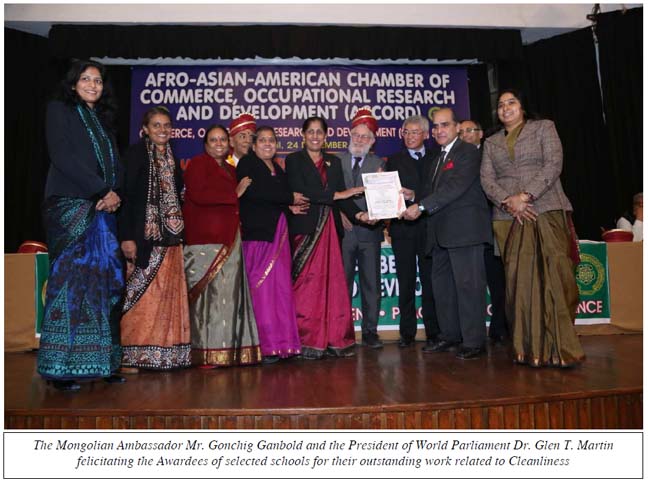
During laundering, temperature, together with the action of water
and detergent work together to reduce microbial contamination levels
on fabrics. During the wash cycle soil and microbes are detached
from fabrics and suspended into the wash water. These are then
“washed away” during the rinse and spin cycles. In addition to
physical removal, micro-organisms can be killed by thermal
inactivation which increases as the temperature is increased.
Chemical inactivation of microbes by the surfactants and activated
oxygen-based bleach used in detergents also contributes to the
hygiene effectiveness of laundering. Adding hypochlorite bleach in
the washing process also achieves inactivation of microbes. A number
of other factors can also contribute including drying and ironing.
Laundry detergents contain a mix of ingredients including
surfactants, builders, optical brighteners, etc. Cleaning action
arises primarily from the action of the surfactants and other
ingredients, which are designed to maximise release and suspension
of dirt and microbes into the wash liquid, together with enzymes
and/or an activated oxygen-based bleach which digest and remove
stains. Although activated oxygen bleach is included in many powder
detergents to digest and remove stains, it also produces some
chemical inactivation of bacteria, fungi and viruses. As a rule of
thumb, powders and tablets normally contain an activated oxygen
bleach, but liquids, and all products (liquid or powder) used for
“coloureds” do not. Surfactants also exert some chemical
inactivation action against certain species although the extent of
their action is not known.
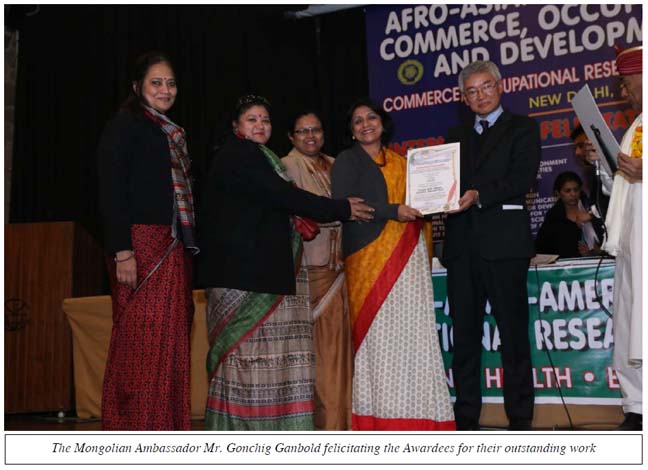
In 2013 the International Scientific Forum on Home Hygiene (IFH)
reviewed some 30 studies of the hygiene effectiveness of laundering
at various temperatures ranging from room temperature to 70 °C,
under varying conditions. A key finding was the lack of
standardisation and control within studies, and the variability in
test conditions between studies such as wash cycle time, number of
rinses etc. The consequent variability in the data (i.e. the
reduction in contamination on fabrics) obtained, in turn makes it
extremely difficult to propose guidelines for laundering with any
confidence, based on currently available data. As a result there is
significant variability in the recommendations for hygienic
laundering of clothing etc. given by different agencies.
Of concern is recent data suggesting that, in reality, modern
domestic washing machines do not reach the temperature specified on
the machine controls.
Medical hygiene at home
Medical hygiene pertains to the hygiene practices that prevents or
minimizes disease and the spreading of disease in relation to
administering medical care to those who are infected or who are more
"at risk" of infection in the home. Across the world, governments
are increasingly under pressure to fund the level of healthcare that
people expect. Care of increasing numbers of patients in the
community, including at home is one answer, but can be fatally
undermined by inadequate infection control in the home.
Increasingly, all of these "at-risk" groups are cared for at home by
a carer who may be a household member who thus requires a good
knowledge of hygiene. People with reduced immunity to infection, who
are looked after at home, make up an increasing proportion of the
population (currently up to 20%). The largest proportion are the
elderly who have co-morbidities, which reduce their immunity to
infection. It also includes the very young, patients discharged from
hospital, taking immuno-suppressive drugs or using invasive systems,
etc. For patients discharged from hospital, or being treated at home
special "medical hygiene" (see above) procedures may need to be
performed for them e.g. catheter or dressing replacement, which puts
them at higher risk of infection.
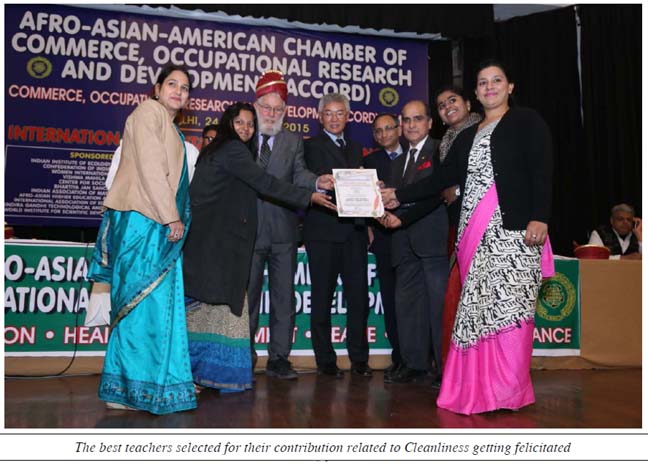
Antiseptics may be applied to cuts,
wounds abrasions of the skin to prevent the entry of harmful
bacteria that can cause sepsis. Day-to-day hygiene practices, other
than special medical hygiene procedures are no different for those
at increased risk of infection than for other family members. The
difference is that, if hygiene practices are not correctly carried
out, the risk of infection is much greater.
Home hygiene in low-income communities
In the developing world, for decades, universal access to water and
sanitation
has been seen as the essential step in reducing the preventable ID
burden, but it is now clear that this is best achieved by programs
that integrate hygiene promotion with improvements in water quality
and availability, and sanitation.
About 2 million people die every year due to diarrheal diseases,
most of them are children less than 5 years of age. The most
affected are the populations in developing countries, living in
extreme conditions of poverty, normally peri-urban dwellers or rural
inhabitants. Providing access to sufficient quantities of safe
water, the provision of facilities for a sanitary disposal of
excreta, and introducing sound hygiene behaviors are of capital
importance to reduce the burden of disease caused by these risk
factors.
Research shows that, if widely practiced,
hand washing with soap could reduce
diarrhea by almost fifty percent and respiratory infections by
nearly twenty-five percent Hand washing with soap also reduces the
incidence of skin diseases, eye infections like trachoma and
intestinal worms, especially ascariasis and trichuriasis.
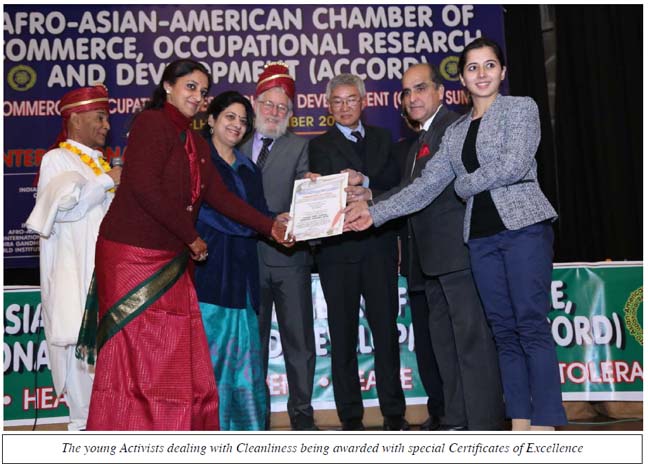
Other hygiene practices, such as safe disposal of waste, surface
hygiene, and care of domestic animals, are also important in low
income communities to break the chain of infection transmission.
Disinfectants and antibacterials in home hygiene
Chemical disinfectants are products that
kill germs (harmful bacteria, viruses and fungi). If the product is
a disinfectant, the label on the product should say "disinfectant"
and/or "kills" germs or bacteria etc. Some commercial products, e.g.
bleaches, even though they are technically disinfectants, say that
they "kill germs", but are not actually labelled as "disinfectants".
Not all disinfectants kill all types of germs. All disinfectants
kill bacteria (called bactericidal). Some also kill fungi
(fungicidal), bacterial spores (sporicidal) and/or viruses (virucidal).
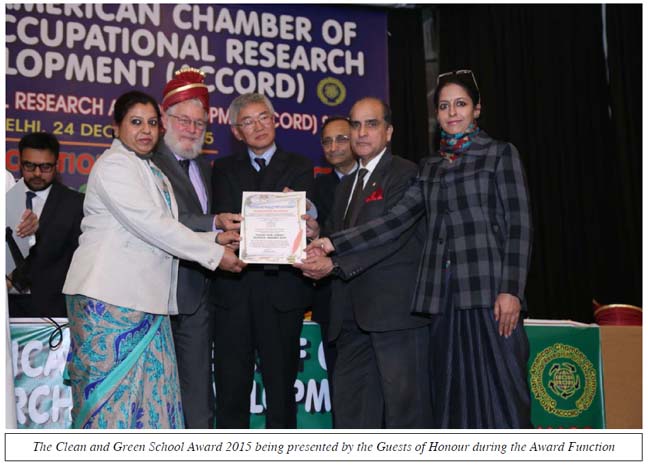
An
antibacterial
product is a product that acts against bacteria in some unspecified
way. Some products labelled "antibacterial" kill bacteria while
others may contain a concentration of active ingredient that only
prevent them multiplying. It is, therefore, important to check
whether the product label States that it "kills" bacteria." An
antibacterial is not necessarily anti-fungal or anti-viral unless
this is Stated on the label.
The term
sanitizer
has been used to define substances that both clean and disinfect.
More recently this term has been applied to alcohol-based products
that disinfect the hands (alcohol hand sanitizers).
Alcohol hand sanitizers however are not considered to be effective
on soiled hands.
The term
biocide
is a broad term for a substance that kills, inactivates or otherwise
controls living organisms. It includes antiseptics
and disinfectants, which combat micro-organisms, and also includes
pesticides.
Personal hygiene
Personal hygiene involves those practices performed by an individual
to care for one's bodily health and well being, through cleanliness.
Motivations for personal hygiene practice include reduction of
personal illness, healing from personal illness, optimal health and
sense of well being, social acceptance and prevention of spread of
illness to others. What is considered proper personal hygiene can be
cultural-specific and may change over time. In some cultures
removal of body hair
is considered proper hygiene. Other practices that are generally
considered proper hygiene include bathing regularly, washing hands
regularly and especially before handling food, washing scalp hair,
keeping hair short or removing hair, wearing clean clothing,
brushing one's teeth, cutting finger nails, besides other practices.
Some practices are gender-specific, such as by a woman during her
menstrual cycle. People tend to develop a routine for attending to
their personal hygiene needs. Other personal hygienic practices
would include covering one's mouth when coughing, disposal of soiled
tissues appropriately, making sure toilets are clean, and making
sure food handling areas are clean, besides other practices. Some
cultures do not kiss or shake hands to reduce transmission of
bacteria by contact.
Personal grooming extends personal
hygiene as it pertains to the maintenance of a good personal and
public appearance, which need not necessarily be hygienic. It may
involve, for example, using deodorants or perfume, shaving, or
combing, besides other practices.
Excessive body hygiene
Excessive body hygiene and allergies
The
hygiene hypothesis
was first formulated in 1989 by Strachan who observed that there was
an inverse relationship between family size and development of
atopic allergic disorders – the more children in a family, the less
likely they were to develop these allergies.
From this, he hypothesised that lack of exposure to "infections" in
early childhood transmitted by contact with older siblings could be
a cause of the rapid rise in atopic disorders over the last thirty
to forty years. Strachan further proposed that the reason why this
exposure no longer occurs is, not only because of the trend towards
smaller families, but also "improved household amenities and higher
standards of personal cleanliness".
Although there is substantial evidence that some microbial exposures
in early childhood can in some way protect against allergies, there
is no evidence that we need exposure to harmful microbes (infection)
or that we need to suffer a clinical infection. Nor is there
evidence that hygiene measures such as hand washing, food hygiene
etc. are linked to increased susceptibility to
atopic disease. If this is the case,
there is no conflict between the goals of preventing infection and
minimising allergies. A consensus is now developing among experts
that the answer lies in more fundamental changes in lifestyle etc.
that have led to decreased exposure to certain microbial or other
species, such as helminths, that are important for development of
immuno-regulatory mechanisms. There is still much uncertainty as to
which lifestyle factors are involved.
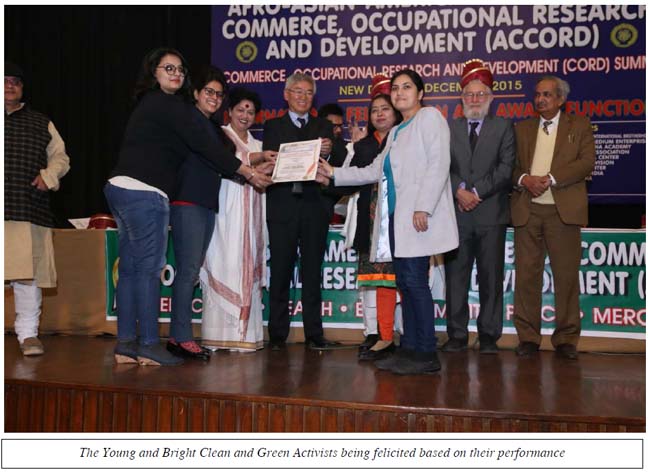
Although media coverage of the hygiene hypothesis has declined, a
strong ‘collective mindset’ has become established that dirt is
‘healthy’ and hygiene somehow ‘unnatural’. This has caused concern
among health professionals that everyday life hygiene behaviours,
which are the foundation of public health, are being undermined. In
response to the need for effective hygiene in home and everyday life
settings, the International Scientific Forum on Home Hygiene has
developed a "risk-based" or targeted approach to home hygiene that
seeks to ensure that hygiene measures are focussed on the places,
and at the times most critical for infection transmission. Whilst
targeted hygiene was originally developed as an effective approach
to hygiene practice, it also seeks, as far as possible, to sustain
"normal" levels of exposure to the microbial flora of our
environment to the extent that is important to build a balanced
immune system.
Excessive body hygiene of internal ear canals
Excessive body hygiene of the
ear canals can result in infection or
irritation. The ear canals require less body hygiene care than other
parts of the body, because they are sensitive, and the body system
adequately cares for these parts. Most of the time the ear canals
are self-cleaning; that is, there is a slow and orderly migration of
the skin lining the ear canal from the eardrum to the outer opening
of the ear. Old earwax is constantly being transported from the
deeper areas of the ear canal out to the opening where it usually
dries, flakes, and falls out. Attempts to clean the ear canals
through the removal of earwax can
actually reduce ear canal cleanliness by pushing debris and foreign
material into the ear that the natural movement of ear wax out of
the ear would have removed.
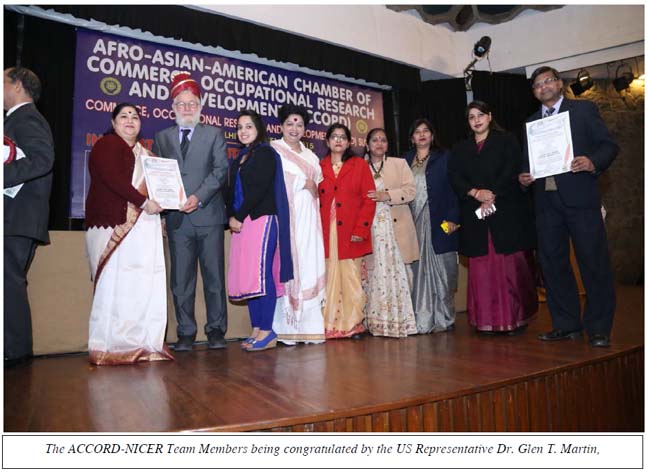
Excessive body hygiene of skin
Excessive body hygiene of the skin can result in skin irritation.
The skin has a natural layer of oil, which promotes elasticity, and
protects the skin from drying. When washing, unless using
aqueous creams with compensatory
mechanisms, this layer is removed leaving the skin unprotected.
Excessive application of soaps, creams, and ointments can also
adversely affect certain of the natural processes of the skin. For
examples, soaps and ointments can deplete the skin of natural
protective oils and fat-soluble content such as cholecalciferol
(vitamin D3), and external substances can be absorbed, to disturb
natural hormonal balances.
Culinary and food hygiene
Culinary hygiene pertains to the practices related to food
management and cooking to prevent
food contamination, prevent food
poisoning and minimize the
transmission of disease to other foods,
humans or animals. Culinary hygiene practices specify safe ways to
handle, store, prepare, serve and eat food.
Culinary practices include:
-
Cleaning and
disinfection
of food-preparation areas and equipment (for example using
designated cutting boards for preparing
raw meats and
vegetables). Cleaning may involve use of
chlorine bleach,
ethanol,
ultraviolet light,
etc. for disinfection.
-
Careful avoidance of
meats contaminated by
trichina worms,
salmonella,
and other pathogens; or thorough cooking of questionable meats.
-
Extreme care in
preparing raw foods, such as
sushi and
sashimi.
-
Institutional
dish sanitizing
by washing with soap and clean water.
-
Washing of hands
thoroughly before touching any food.
-
Washing of hands
after touching uncooked food when
preparing meals.
-
Not using the same
utensils
to prepare different foods.
-
Not sharing
cutlery
when eating.
-
Not licking fingers
or hands while or after eating.
-
Not reusing serving
utensils that have been licked.
-
Proper
storage of food
so as to prevent
contamination by
vermin.
-
Refrigeration
of foods (and avoidance of specific foods in environments where
refrigeration is or was not feasible).
-
Labeling food to
indicate when it was produced (or, as food manufacturers prefer,
to indicate its
"best before" date).
-
Proper disposal of
uneaten food and packaging.
Personal service hygiene
Personal service hygiene pertains to the practices related to the
care and use of instruments used in the administration of personal
care services to people:
Personal hygiene practices include:
-
Sterilization of
instruments used by service providers including
hairdressers,
aestheticians,
and other service providers.
-
Sterilization by
autoclave
of instruments used in
body piercing and
tattoo marking.
-
Cleaning hands.
History of hygienic practices
The earliest written account of Elaborate codes of hygiene can be
found in several Hindu texts, such as the
Manusmriti and the Vishnu Purana.
Bathing is one of the five Nitya karmas
(daily duties) in Hinduism, and not performing it leads to sin,
according to some scriptures.
Regular bathing was a hallmark of
Roman civilization. Elaborate
baths were constructed in urban areas to
serve the public, who typically demanded the infrastructure to
maintain personal cleanliness. The complexes usually consisted of
large, swimming pool-like baths, smaller cold and hot pools, saunas,
and spa-like facilities where individuals could be depilated, oiled,
and massaged. Water was constantly changed by an aqueduct-fed
flow. Bathing outside of urban centers involved smaller, less
elaborate bathing facilities, or simply the use of clean bodies of
water. Roman cities also had large sewers,
such as Rome's Cloaca Maxima, into
which public and private latrines drained. Romans didn't have
demand-flush toilets but did have some toilets with a continuous
flow of water under them. (Similar toilets are seen in Acre
Prison in the film Exodus.)
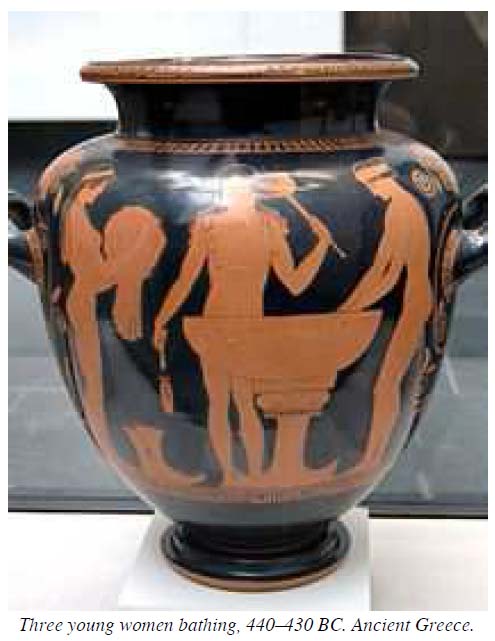
Until the late 19th Century, only the elite in Western cities
typically possessed indoor facilities for relieving bodily
functions. The poorer majority used communal facilities built above
cesspools in backyards and courtyards.
This changed after Dr. John Snow
discovered that cholera was
transmitted by the fecal contamination of water. Though it took
decades for his findings to gain wide acceptance, governments and
sanitary reformers were eventually convinced of the health benefits
of using sewers to keep human waste from contaminating water. This
encouraged the widespread adoption of both the flush toilet
and the moral imperative that bathrooms should be indoors and as
private as possible.
Islamic hygienical jurisprudence
Since the 7th century,
Islam has always placed a strong emphasis
on hygiene. Other than the need to be ritually clean in time for the
daily prayer (Arabic: Salat)
through Wudu and Ghusl,
there are a large number of other hygiene-related rules governing
the lives of Muslims. Other issues include the Islamic
dietary laws. In general, the
Qur'an advises Muslims to uphold high
standards of physical hygiene and to be ritually clean whenever
possible.
Hygiene in medieval Europe
Contrary to popular belief and although the Early Christian leaders,
such as Boniface I, condemned bathing as unspiritual,
bathing and sanitation
were not lost in Europe with the collapse of the Roman Empire.
Soap making first became an
established trade during the so-called "Dark Ages".
The Romans used scented
oils (mostly from Egypt), among
other alternatives.
Northern Europeans were not in the habit of bathing: in the ninth
century
Notker the Stammerer,
a Frankish monk of St Gall, related a disapproving anecdote that
attributed ill results of personal hygiene to an Italian fashion:
There was a certain deacon who followed the habits of the Italians
in that he was perpetually trying to resist nature. He used to take
baths, he had his head very closely shaved, he polished his skin, he
cleaned his nail, he had his hair cut as short as if it were turned
on a lathe, and he wore linen underclothes and a snow-white shirt.
Secular medieval texts constantly refer to the washing of hands
before and after meals, but Sone de Nansay, hero of a 13th-century
romance, discovers to his chagrin that the Norwegians do not wash up
after eating. In the 11th and 12th centuries, bathing was essential
to the Western European upper class: the
Cluniac
monasteries to which they resorted or retired were always provided
with bathhouses, and even the monks were required to take full
immersion baths twice a year, at the two Christian festivals of
renewal, though exhorted not to uncover themselves from under their
bathing sheets. In 14th century Tuscany, the newlywed couple's bath
together was such a firm convention one such couple, in a large
coopered tub, is illustrated in fresco in the town hall of San
Gimignano.
Bathing had fallen out of fashion in Northern Europe long before the
Renaissance, when the communal public
baths of German cities were in their turn a wonder to Italian
visitors. Bathing was replaced by the heavy use of sweat-bathing and
perfume, as it was thought in
Europe that water could carry disease into the body through the
skin. Bathing encouraged an erotic atmosphere that was played upon
by the writers of romances
intended for the upper class; in the tale of Melusine
the bath was a crucial element of the plot. "Bathing and grooming
were regarded with suspicion by moralists, however, because they
unveiled the attractiveness of the body. Bathing was said to be a
prelude to sin, and in the penitential of Burchard of Worms
we find a full catalogue of the sins that ensued when men and women
bathed together." Medieval church authorities believed that
public bathing created an environment
open to immorality and disease; the 26 public baths of Paris in the
late 13th century were strictly overseen by the civil authorities.
At a later date Roman Catholic Church
officials even banned public bathing in an unsuccessful effort to
halt syphilis epidemics from
sweeping Europe.
Modern sanitation was not widely adopted until the 19th and 20th
centuries. According to medieval historian Lynn Thorndike, people in
Medieval Europe probably bathed more than
people did in the 19th century. Sometime after Louis Pasteur's
experiments proved the germ theory of disease
and Joseph Lister and others put
them into practice in sanitation,
hygienic practices came to be regarded as synonymous with
health, as they are in modern times.
Industrial society
A
social hygiene movement
in the late 19th and early 20th centuries, sometimes including
mental hygiene (now mental health),
sexual hygiene and racial hygiene movements, was an attempt by
Progressive-era reformers to
prevent and control disease by changing the public's habits through
the use of scientific research
methods and modern media techniques. It was also based in part on
eugenics, and by the 1930s
thousands of forced sterilizations of people deemed undesirable took
place in America each year. After 1945 when the Nazis had taken it
even further, the movement was largely discredited. The drive for
cleanliness persisted, however, particularly cleanliness in
children. This showed many benefits such as reduced child mortality
rates. It also became increasingly commercialized, however, and may
have contributed to environmental pollution, resistance to
antibiotics, and even restricting the development of the immune
system leading to increased incidence of diseases such as
asthma or allergies.
Information society
In connection with the development of the
information society, appeared
information pollution, evolving
information ecology - associated with
informational hygiene.
what is Sanitation ?
Sanitation is the
hygienic
means of promoting health through
prevention of human contact with
the hazards of wastes
as well as the treatment and proper disposal of sewage
or wastewater. Hazards can be
either physical, microbiological,
biological or chemical agents of disease. Wastes that can cause
health problems include human and animal excreta, solid wastes,
domestic wastewater (sewage, sullage, greywater), industrial wastes
and agricultural wastes. Hygienic means of prevention can be by
using engineering solutions (e.g., sewerage, wastewater
treatment, stormwater drainage, solid
waste management, excreta management), simple technologies (e.g.,
pit latrines, dry toilets,
UDDTs, septic tanks),
or even simply by personal hygiene practices (e.g., hand
washing with soap, behavior change).
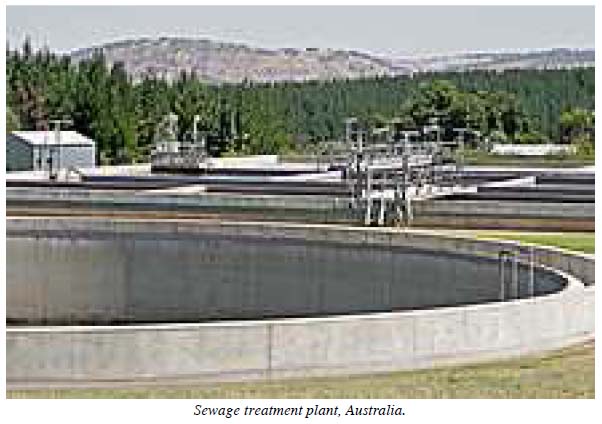
The
World Health Organization
States that:
"Sanitation generally refers to the provision of facilities and
services for the safe disposal of human urine and feces. Inadequate
sanitation is a major cause of disease world-wide and improving
sanitation is known to have a significant beneficial impact on
health both in households and across communities. The word
'sanitation' also refers to the maintenance of hygienic conditions,
through services such as garbage collection and wastewater disposal.

Sanitation includes all four of these engineering infrastructure
items (even though often only the first one is strongly associated
with the term "sanitation"):
-
Excreta management
systems
-
Wastewater management
systems
-
Solid waste
management systems
-
Drainage systems for
rainwater, also called stormwater drainage
Despite the fact that sanitation includes wastewater
treatment, the two terms are often use side by side: people tend to
speak of sanitation and wastewater management which is why
the differeantiation is also made in the sub-headings in this
article. The term sanitation has been connected to several
descriptors so that the terms sustainable sanitation, improved
sanitation, unimproved sanitation, environmental sanitation, on-site
sanitation, ecological sanitation, dry sanitation are all in use
today. Sanitation should be regarded with a systems approach in mind
which includes collection/containment, conveyance/transport,
treatment and disposal or reuse.
Wastewater management
Collection
The standard sanitation technology in urban areas is the collection
of
wastewater
in sewers, its treatment in wastewater treatment plants
for reuse or disposal in rivers,
lakes or the sea. Sewers are either combined with storm
drains or separated from them as
sanitary sewers. Combined sewers
are usually found in the central, older parts or urban areas. Heavy
rainfall and inadequate
maintenance can lead to combined sewer overflows or sanitary
sewer overflows, i.e., more or less
diluted raw sewage being
discharged into the environment. Industries often discharge
wastewater into municipal sewers, which can complicate wastewater
treatment unless industries pre-treat their discharges.
The high investment cost of conventional wastewater collection
systems are difficult to afford for many
developing countries. Some countries have
therefore promoted alternative wastewater collection systems such as
condominial sewerage, which uses pipes with smaller diameters at
lower depth with different network layouts from conventional
sewerage.
Treatment
For more details on this topic, see
Sewage
treatment.
Centralised treatment
In developed countries treatment of municipal wastewater is now
widespread, but not yet universal (for an overview of technologies
see
wastewater treatment). In
developing countries most wastewater is
still discharged untreated into the environment. For example, in
Latin America only about 15% of collected sewerage is being treated
(see water and sanitation in Latin America)
On-site treatment, decentralised treatment
In many suburban and rural areas households are not connected to
sewers. They discharge their wastewater into
septic tanks or other types of on-site
sanitation. On-site systems include drain fields,
which require significant area of land. This makes septic systems
unsuitable for most cities.
Constructed wetlands are another example
for a possible decentralised treatment option.
Disposal or reuse of treated wastewater
The reuse of untreated or partially treated wastewater in
irrigated agriculture is common in
developing countries. The reuse of treated wastewater in
landscaping, especially on golf courses, irrigated agriculture and
for industrial use is becoming increasingly widespread.
Types of sanitation
The term sanitation is connected with various descriptors to signify
certain types of sanitation systems. Here they are shown in
alphabetical order:
Dry sanitation
The term "dry sanitation" is somewhat misleading as sanitation as
includes handwashing and can never be "dry". A more precise term
would be "dry excreta management". When people speak of "dry
sanitation" they usually mean sanitation systems with
dry toilets
with urine diversion, in
particular the urine-diverting dry toilet
(UDDT).
Ecological sanitation
Ecological sanitation, which is commonly
abbreviated to ecosan, is an approach, rather than a technology or a
device which is characterized by a desire to "close the loop"
(mainly for the nutrients and organic matter) between sanitation and
agriculture in a safe manner. Put in other words: "Ecosan systems
safely recycle excreta resources (plant nutrients and organic
matter) to crop production in such a way that the use of
non-renewable resources is minimised". When properly designed and
operated, ecosan systems provide a hygienically safe, economical,
and closed-loop system to convert human excreta into nutrients to be
returned to the soil, and water to be returned to the land. Ecosan
is also called resource-oriented sanitation.
Environmental sanitation
Environmental sanitation is the control of environmental factors
that form links in disease
transmission.
Subsets of this category are solid waste management, water and
wastewater treatment,
industrial waste treatment and noise and
pollution control.
Improved and unimproved sanitation
Improved sanitation and unimproved
sanitation refers to the management of
human feces at the household level. This terminology is the
indicator used to describe the target of the Millennium
Development Goal on sanitation, by the
WHO/UNICEF
Joint Monitoring Programme for Water Supply and Sanitation.
Lack of sanitation
Lack of sanitation refers to the absence of sanitation. In practical
terms it usually means lack of toilets or lack of hygienic toilets
that anybody would want to use voluntarily. The result of lack of
sanitation is usually
open defecation (and open urination but
this is of less concern) with the associated serious public health
issues.
On-site sanitation
Onsite sanitation is the collection and treatment of waste is done
where it is deposited. Examples are the use of pit
latrines, septic tanks,
and Imhoff tanks
Sustainable sanitation
Sustainable sanitation is a term that has
been defined with five sustainability criteria by the
Sustainable Sanitation Alliance. In order
to be sustainable, a sanitation system has to be not only (i)
economically viable, (ii) socially acceptable, and (iii) technically
and (iv) institutionally appropriate, it should also (v) protect the
environment and the natural resources. The main objective of a
sanitation system is to protect and promote human health by
providing a clean environment and breaking the cycle of disease.
clean Toilets
A toilet is a
sanitation fixture used primarily for the
disposal of human urine and feces. They are often found in a small
room referred to as a toilet, bathroom or lavatory.
A toilet can be designed for people who prefer to sit (on a toilet
pedestal) or for people who prefer to squat (over a squatting
toilet). Flush toilets, which are
common in many parts of the world (particularly in more affluent
countries or regions), may be connected to a nearby septic
tank or more commonly in urban areas via
"large" (3–6 in or 7.6–15.2 cm) sewer pipe connected to a
sewerage pipe system. The water and waste
from many different sources is piped in large pipes to a more
distant sewage treatment plant or
wastewater treatment plant. Dry toilets,
including pit latrines and
composting toilets require no or little
water with excreta being removed manually or composted
in situ. Chemical toilets or
mobile dry toilets can be used in
mobile and many temporary situations where there is no access to
sewerage. Some types of toilets are more commonly referred to as
latrines, for example the "pit
latrine", and for most people the term
"toilet" has a cleaner more upmarket connotation than the word
"latrine".
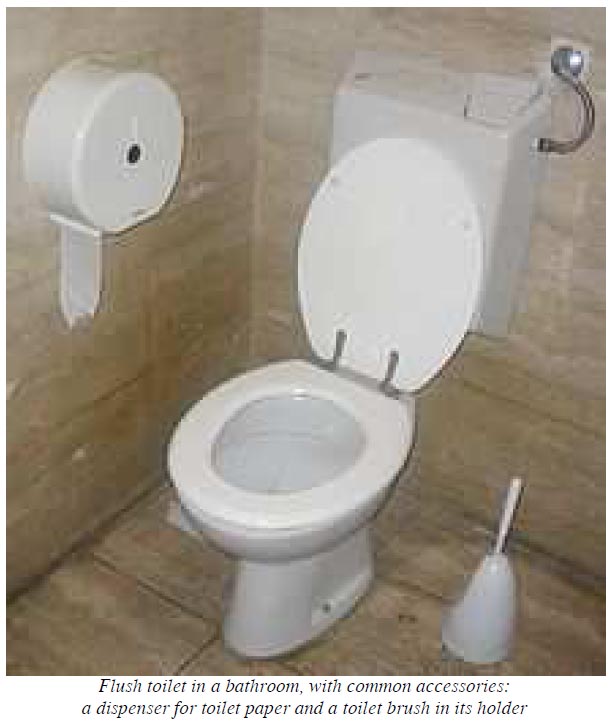
Ancient civilizations used toilets attached to simple flowing water
sewage systems included those of the
Indus Valley Civilization, e.g.,
Harappa and Mohenjo-daro
which are located in present day India and Pakistan and also the
Romans and Egyptians.
Although a precursor to the flush toilet system which is widely used
nowadays was designed in 1596 by John Harington,
such systems did not come into widespread use until the late
nineteenth century. Thomas Crapper
was one of the early makers of flush toilets in England.
Diseases, including
cholera, which still affects some 3
million people each year, can be largely prevented when effective
sanitation and water treatment prevents fecal matter from
contaminating drinking water
supplies.
History
Ancient civilizations
According to Teresi et al. (2002)
The third millennium BC was the "Age of Cleanliness." Toilets and
sewers were invented in several parts of the world, and
Mohenjo-Daro circa 2800 BC had some of
the most advanced, with lavatories built into the outer walls of
houses. These were primitive "Western-style" toilets made from
bricks with wooden seats on top. They had vertical chutes, through
which waste fell into street drains or cesspits. Sir Mortimer
Wheeler, the director general of
archaeology in India from 1944 to 1948, wrote, "The high quality of
the sanitary arrangements could well be envied in many parts of the
world today."

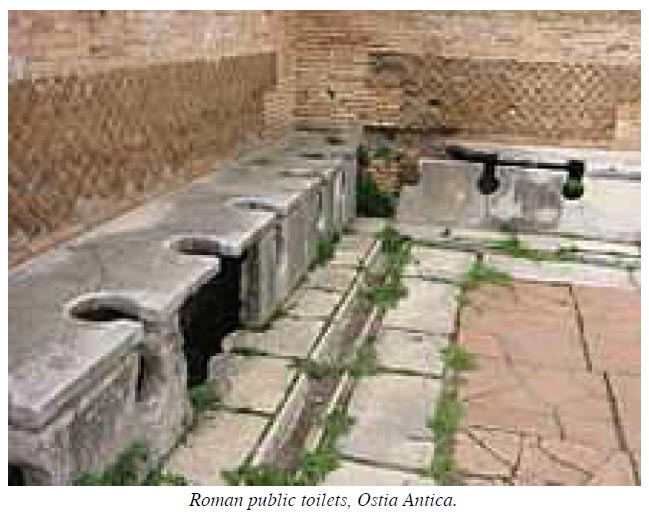
The toilets at
Mohenjo-Daro,
built about 2600 BC and described above, were only used by the
affluent classes. Most people would have squatted over old pots set
into the ground or used open pits. The people of the Harappan
civilization in Pakistan and northwestern
India had primitive water-cleaning toilets that used flowing water
in each house that were linked with drains covered with burnt clay
bricks. The flowing water removed the human wastes.
Early toilets that used flowing water to remove the waste are also
found at
Skara Brae
in Orkney, Scotland, which was
occupied from about 3100 BC until 2500 BC. Some of the houses there
have a drain running directly beneath them, and some of these had a
cubicle over the drain. Around the 18th century BC, toilets started
to appear in Minoan Crete,
Egypt in the time of the Pharaohs
and ancient Persia. In
Roman civilization, toilets using flowing
water were sometimes part of public bath houses.
In 2012, archaeologists founded what is believed to be Southeast
Asia's earliest latrine during the excavation of a neolithic village
in the
Rạch Núi archaeological site, southern
Viet Nam. The toilet, dating back
1500 BC, yielded important clues about early Southeast Asian
society. More than 30 preserved feces from humans and dogs
containing fish and shattered animal bones from the site provided a
wealth of information on the diet of humans and dogs at Rạch Núi and
on the types of parasites each had to contend with.
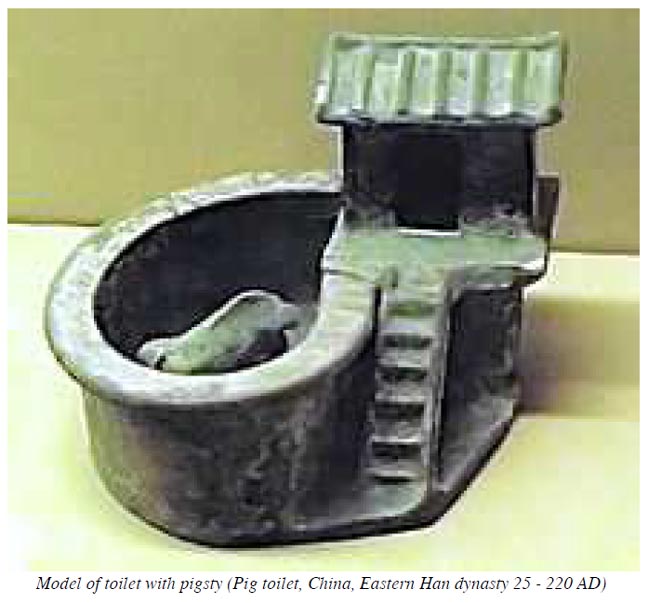
Roman toilets, like the ones pictured here, are commonly thought to
have been used in the sitting position. But sitting toilets only
came into general use in the mid-19th century in the Western world.
The Roman toilets were probably elevated to raise them above open
sewers which were periodically "flushed" with flowing water, rather
than elevated for sitting.
The Romans weren't the first civilisation to adopt a sewer system:
The Indus Valley civilisation had a rudimentary network of sewers
built under grid pattern streets, and it was the most advanced seen
so far.
Squat toilets (also known as an Arabic,
French, Chinese, Japanese, Korean, Iranian, Indian, Turkish or
Natural-Position toilet) are used by squatting rather than sitting
and are still used by the majority of the world's population.
There are several types of squat toilets, but they all consist
essentially of a hole in the ground or floor with provisions for
human waste.
Early modern Europe
Chamber pots were in common use in Europe
from ancient times, even being taken to the Middle East by Christian
pilgrims during the Middle Ages. By the Early Modern era, chamber
pots were frequently made of china or copper and could include
elaborate decoration. They were emptied into the gutter of the
street nearest to the home.

During the
Victorian era,
British housemaids emptied household chamber pots into a "slop sink"
that was inside a housemaid's cupboard on the upper floor of the
house. The housemaids' cupboard also contained a separate sink, made
of wood with a lead lining to prevent chipping china chamber pots,
for washing the "bedroom ware". Once indoor running water was built
into British houses, servants were sometimes given their own
lavatory downstairs, separate from the family lavatory.
By the 16th century,
cesspits and cesspools were increasingly
dug into the ground near houses in Europe as a means of collecting
waste, as urban populations grew and street gutters became blocked
with the larger volume of human waste. Rain was no longer sufficient
to wash away waste from the gutters.
A pipe connected the latrine to the cesspool, and sometimes a small
amount of water washed waste through the pipe into the cesspool.
Cesspools would be cleaned out by tradesmen, who pumped out liquid
waste, then shovelled out the solid waste and collected it in
horse-drawn carts during the night. This solid waste would be used
as fertilizer.
The perception that human waste had value as fertilizer, and in
ammonia production, delayed the construction of a modern sewer
system as a replacement for the city's cesspool system. In the early
19th century, public officials and public hygiene experts studied
and debated the matter at length, for several decades.
The construction of an underground network of pipes to carry away
solid and liquid waste was only begun in the mid 19th-century,
gradually replacing the cesspool system, although cesspools were
still in use in some parts of Paris into the 20th century. The
growth of indoor plumbing, toilets and bathtubs with running water
came at the same time.
Development of the flush toilet
In 1596,
Sir John Harington
(1561–1612) published A New Discourse of a Stale Subject, Called
the Metamorphosis of Ajax, describing a forerunner to the modern
flush toilet installed at his house at Kelston.
The design had a flush valve to let water out of the tank, and a
wash-down design to empty the bowl. He installed one for his
godmother Queen Elizabeth I at
Richmond Palace, although she
refused to use it because it made too much noise. The Ajax was not
taken up on a wide scale in England,
but was adopted in France under
the name Angrez.
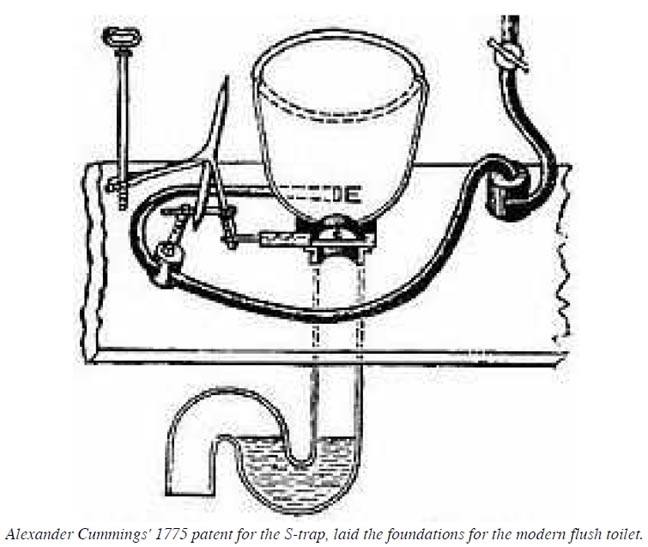
With the onset of the
Industrial Revolution and related
advances in technology, the flush toilet began to emerge into its
modern form. A crucial advance in plumbing, was the S-trap,
invented by Alexander Cummings in
1775, and still in use today. This device uses the standing water to
seal the outlet of the bowl, preventing the escape of foul air from
the sewer. His design had a sliding valve in the bowl outlet above
the trap. Two years later, Samuel Prosser applied for a British
patent for a "plunger closet".

Prolific inventor
Joseph Bramah began his professional
career installing water closets (toilets) that were based on
Alexander Cumming's patented design of 1775. He found that the
current model being installed in London houses had a tendency to
freeze in cold weather. In collaboration with a Mr. Allen, he
improved the design by replacing the usual slide valve with a hinged
flap that sealed the bottom of the bowl.
He also developed a float valve system for the flush tank. Obtaining
the patent for it in 1778, he began making toilets at a workshop in
Denmark Street,
St Giles.
The design was arguably the first practical flush toilet, and
production continued well into the 19th century, used mainly on
boats.
Dry earth closet alternative
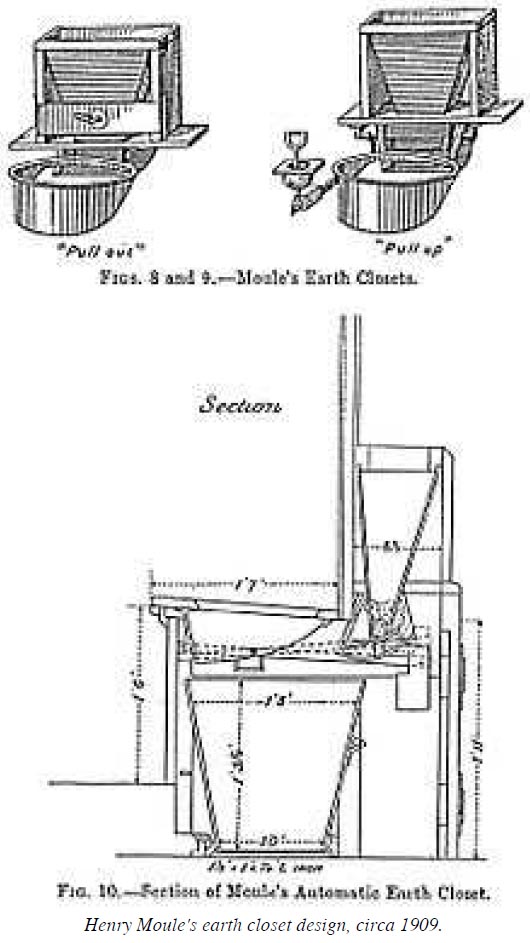
Before the
flush toilet
became universally accepted, there were inventors, scientists, and
public health officials who
supported the use of dry earth closets. These were invented by the
English clergyman Henry Moule, who
dedicated his life to improving public sanitation after witnessing
the horrors of the cholera
epidemics of 1849 and 1854. Impressed by the insalubrity of the
houses, especially in the summer of 1858 (the Great Stink)
he invented what is called the dry earth system.
In partnership with James Bannehr, he took out a patent for the
process (No. 1316, dated 28 May 1860). Among his works bearing on
the subject were: ‘The Advantages of the Dry Earth System,’ 1868;
‘The Impossibility overcome: or the Inoffensive, Safe, and
Economical Disposal of the Refuse of Towns and Villages,’ 1870; ‘The
Dry Earth System,’ 1871; ‘Town Refuse, the Remedy for Local
Taxation,’ 1872, and ‘National Health and Wealth promoted by the
general adoption of the Dry Earth System,’ 1873.
His system was adopted in private houses, in rural districts, in
military camps, in many hospitals, and extensively in the
British Raj.
Ultimately, however, it failed to gain the same public support and
attention as the water closet, although the design remains today in
some parts of the world.
Industrial production
It was only in the mid-19th century, with growing levels of
urbanisation and industrial prosperity, that the flush toilet became
a widely used and marketed invention. This period coincided with the
dramatic
growth in the sewage system, especially
in London, which made the flush
toilet particularly attractive for health and sanitation reasons.

George Jennings established a business
manufacturing water closets, salt-glaze drainage, sanitary pipes and
sanitaryware at Parkstone Pottery in the 1840s, where he popularized
the flush toilet to middle class. At The Great Exhibition
at Hyde Park held from 1 May to 15
October 1851, George Jennings installed his Monkey Closets in the
Retiring Rooms of The Crystal Palace.
These were the first public toilets, and they caused great
excitement. During the exhibition, 827,280 visitors paid one penny
to use them; for the penny they got a clean seat, a towel, a comb
and a shoe shine. "To spend a penny" became a euphemism (now
archaic) for going to the toilet.
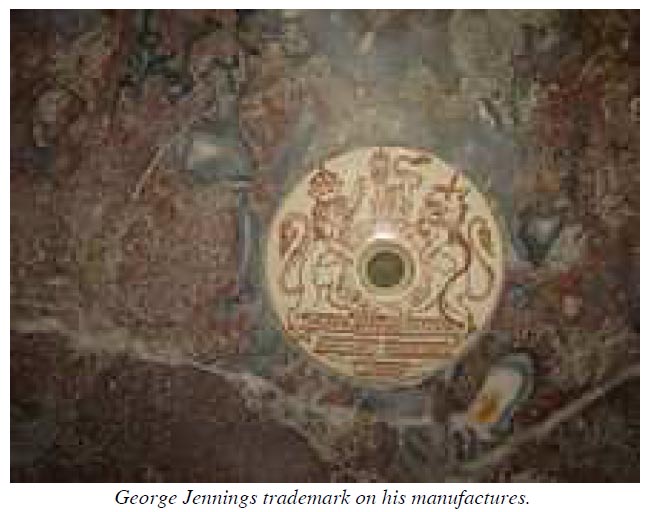
When the exhibition finished and moved to Sydenham, the toilets were
to be closed down. However, Jennings persuaded the organisers to
keep them open, and the toilet went on to earn over £1000 a year. He
opened the first underground convenience at
the Royal Exchange
in 1854. He received a patent in 1852 for an improved construction
of water-closet, in which the pan and trap were constructed in the
same piece, and so formed that there was always a small quantity of
water retained in the pan itself, in addition to that in the trap
which forms the water-joint. He also improved the construction of
valves, drain traps, forcing pumps and pump-barrels. By the end of
the 1850s building codes suggested
that most new middle-class homes in British cities were equipped
with a water closet.
Another pioneering manufacturer was
Thomas William Twyford, who invented the
single piece, ceramic flush
toilet. The 1870s proved to be a defining period for the sanitary
industry and the water closet; the debate between the simple water
closet trap basin made entirely of earthenware and the very
elaborate, complicated and expensive mechanical water closet would
fall under public scrutiny and expert opinion. In 1875, the
"wash-out" trap water closet was first sold and was found as the
public's preference for basin type water closets. By 1879, Twyford
had devised his own type of the "wash out" trap water closet, he
titled it the "National", and became the most popular wash-out water
closet.
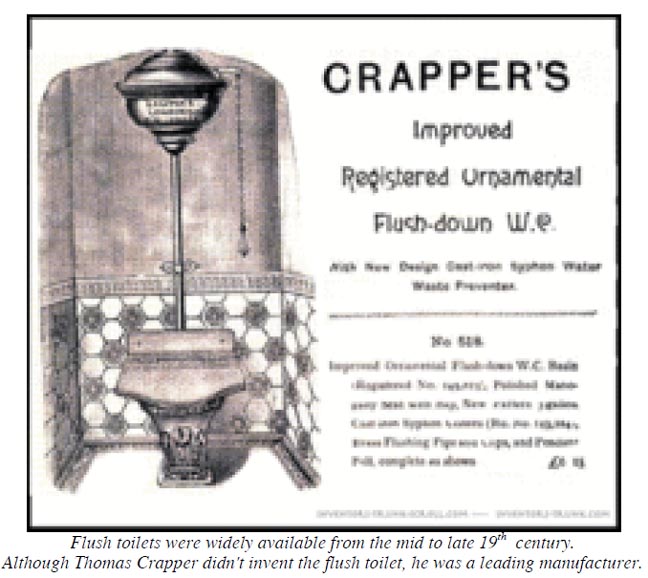
By the 1880s, the free-standing water closet was sold and quickly
gained popularity; the free-standing water closet was able to be
cleaned more easily and was therefore a more hygienic water closet.
Twyford's "Unitas" model was free standing and made completely of
earthenware. Throughout the 1880s he submitted further patents for
improvements to the flushing rim and the outlet. Finally in 1888, he
applied for a patent protection for his "after flush" chamber; the
device allowed for the basin to be refilled by a lower quantity of
clean water in reserve after the water closet was flushed. The
modern pedestal "flush-down" toilet was demonstrated by Frederick
Humpherson of the Beaufort Works,
Chelsea, England
in 1885.
The leading companies of the period issued catalogues, established
showrooms in department stores and marketed their products around
the world. Twyford had showrooms for water closets in
Berlin, Germany; Sydney,
Australia; and Cape Town, South
Africa. The Public Health Act 1875
set down stringent guidelines relating to sewers, drains, water
supply and toilets and lent tacit government endorsement to the
prominent water closet manufacturers of the day.
Contrary to popular legend, Sir
Thomas Crapper did not invent the flush
toilet. He was, however, in the forefront of the industry in the
late 19th century, and held nine patents, three of them for water
closet improvements such as the floating ballcock.
His flush toilets were designed by inventor Albert Giblin, who
received a British patent for the "Silent Valveless Water Waste
Preventer", a siphon discharge system. Crapper popularized the
siphon system for emptying the tank, replacing the earlier floating
valve system which was prone to leaks.
Spread & further developments
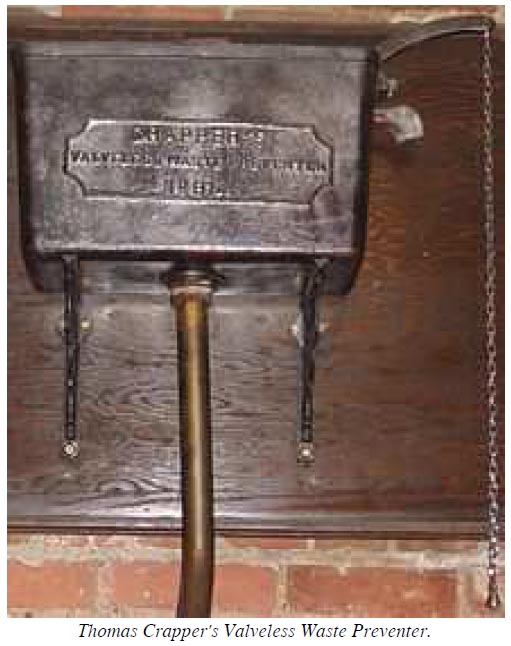
Although flush toilets first appeared in Britain, they soon spread
to the
Continent.
The first such examples may have been the three "waterclosets"
installed in the new town house of banker Nicolay August Andresen
on 6 Kirkegaten in Christiania,
insured in January 1859.
The toilets were probably imported from Britain, as they were
referred to by the English term "waterclosets" in the insurance
ledger. Another early watercloset on the European continent, dating
from 1860, was imported from Britain to be installed in the rooms of
Queen Victoria in Ehrenburg Palace
(Coburg, Germany); she was the
only one who was allowed to use it.
In America, the chain-pull indoor toilet was introduced in the homes
of the wealthy and in hotels, soon after its invention in England in
the 1880s. Flush toilets were introduced in the 1890s.William
Elvis Sloan invented the
Flushometer in 1906, which used
pressurized water directly from the supply line for faster recycle
time between flushes.
The Flushometer is still in use today in public restrooms worldwide.
The vortex-flushing toilet bowl, which creates a self-cleansing
effect, was invented by Thomas MacAvity Stewart of
Saint John, New Brunswick in 1907.
Philip Haas of Dayton,
Ohio, made some significant
developments, including the flush rim toilet with multiple jets of
water from a ring and the water closet flushing and recycling
mechanism similar to those in use today.
Bruce Thompson, working for Caroma in
Australia, developed the Duoset cistern
with two buttons and two flush volumes
as a water-saving measure in 1980. Modern versions of the Duoset are
now available worldwide, and save the average household 67% of their
normal water usage.
Flush toilets
Operation
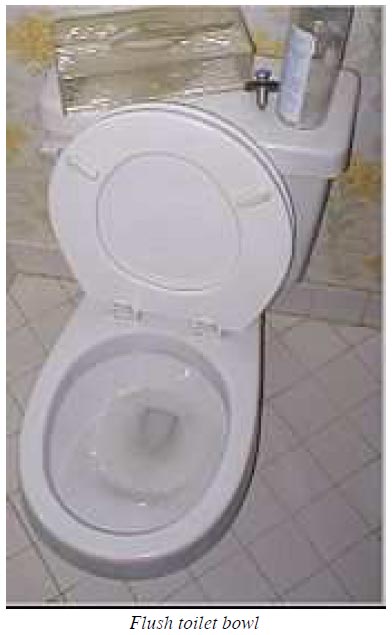

A typical flush toilet is a vitreous,
ceramic bowl containing water plus
plumbing made to be rapidly filled with
more water. The water in the toilet bowl is connected to a hollow
drain pipe shaped like an upside-down U connecting the drain. One
side of the U channel is arranged as a hollow siphon
tube longer than the water in the bowl is high. The siphon tube
connects to the drain. The bottom of the upside-down U-shaped drain
pipe limits the height of the water in the bowl before it flows down
the drain. If water is poured slowly into the bowl it simply flows
over the bottom of the upside-down U and pours slowly down the
drain—the toilet does not flush. The water in the bowl acts as a
barrier to sewer gas entering and as a receptacle for waste. Sewer
gas is vented through a vent pipe attached to the sewer line.
When a user flushes a toilet, a valve opens and allows the tank's
water to quickly enter the toilet bowl. This influx from the tank
causes the swirling water in the bowl to rapidly rise and fill the
U-shaped drain. The siphon tube mounted in the back of the toilet.
This full siphon tube starts the toilet's
siphon
action. The siphon action quickly (4–7 seconds) “pulls” nearly all
of the water and waste in the bowl and the on-rushing tank water
down the drain—it flushes. When most of the water has drained out of
the bowl, the continuous column of water up and over the bottom of
the upside-down U-shaped drain pipe (the siphon) is broken when air
enters the siphon tube. The toilet then gives its characteristic
gurgle as the siphon action ceases and no more water flows out of
the toilet. After flushing, the flapper valve in the water tank
closes; water lines and valves connected to the water supply refill
the toilet tank and bowl. The toilet is again ready for use.
At the top of the toilet bowl is a rim with many slanted drain holes
connected to the tank to fill, rinse and induce swirling in the bowl
when it is flushed. Mounted above the toilet is a large holding tank
with about (now) 1.6 to 1.2 US gallons (6.1 to 4.5 L) of water. This
tank is built with a large drain 2.0 to 3.0 inches (5.08 to 7.62 cm)
diameter hole at its bottom covered by a flapper valve that allows
the water to rapidly leave the holding tank. The
plumbing is built to allow entry of the
tank’s water into the toilet in a very short period. This water
pours through the holes in the rim and a siphon jet hole about 1.0
inch (2.54 cm) diameter in the bottom of the toilet. Other toilets
use a large hole in the front of the rim to allow fast filling of
the bowl.
Manufacture
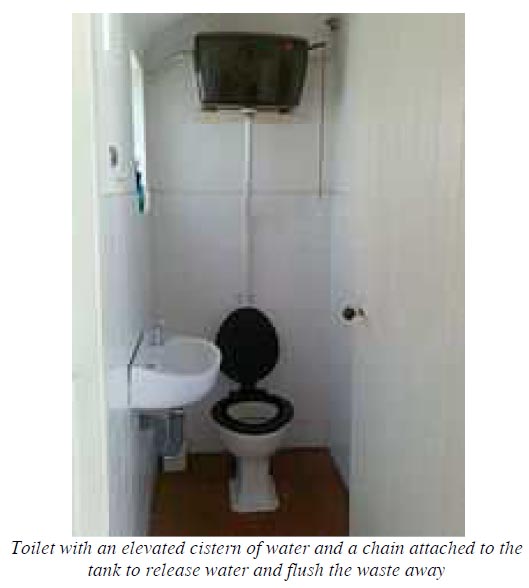
A toilet's body is typically made from vitreous china, which starts
out as an aqueous suspension of various minerals called a
slip. It takes about 20 kilograms (44 lb)
of slip to make a toilet.
This slip is poured into the space between
plaster of Paris molds. The toilet bowl,
rim, tank and tank lid require separate molds. The molds are
assembled and set up for filling and the slip-filled molds sit for
about an hour after filling. This allows the plaster molds to absorb
moisture from the slip, which makes it semisolid next to the mold
surfaces but lets it remain liquid further from the surface of the
molds. Then, the workers remove plugs to allow any excess liquid
slip to drain from the cavities of the mold—this excess slip is
recycled for later use.
The drained-out slip leaves hollow voids inside the fixture, using
less material to keep it both lighter and easier to fire in a
kiln. This molding process allows the
formation of intricate internal waste lines in the fixture—the
drain's hollow cavities are poured out as slip.
At this point, the toilet parts without their molds look like and
are about as strong as soft clay. After about one hour the top core
mold (interior of toilet) is removed. The rim mold bottom (which
includes a place to mount the holding tank) is removed, and it then
has appropriate slanted holes for the rinsing jets cut, and the
mounting holes for tank and seat are punched into the rim piece.
Valve holes for rapid water entry into the toilet are cut into the
rim pieces. The exposed top of the bowl piece is then covered with a
thick slip and the still-uncured rim is attached on top of the bowl
so that the bowl and hollow rim are now a single piece. The bowl
plus rim is then inverted, and the toilet bowl is set upside down on
the top rim mold to hold the pieces together as they dry. Later, all
the rest of the mold pieces are removed. As the clay body dries
further it hardens more and continues to shrink. After a few hours,
the casting is self-supporting, and is called
greenware.
After the molds are removed, workers use hand tools and sponges to
smooth the edges and surface of the greenware, and to remove the
mold joints or roughness: this process is called "fettling". For
large scale production pieces, these steps may be automated. The
parts are then left outside or put in a warm room to dry before
going through a dryer at about 93 °C (200 °F), for about 20–36
hours.
After the surfaces are smoothed, the bowls and tanks are sprayed
with
glaze of
various kinds to get different colors. This glaze is designed to
shrink and contract at the same rate as the greenware while
undergoing firing. After being sprayed with glaze, the toilet bowls,
tanks, and lids are placed in stacks on a conveyor belt or "car"
that slowly goes through a large kiln to be fired.
The belt slowly moves the glaze-covered greenware into a tunnel
kiln, which has different temperature zones inside it starting at
about 200 °C (400 °F) at the front, increasing towards the middle to
over 1,200 °C (2,200 °F) degrees and exiting around out 90 °C
(200 °F). During the firing in the kiln, the greenware and glaze are
vitrified as one solid finished unit. Transiting the kiln takes
glaze-covered greenware around 23–40 hours. After the pieces are
removed from the kiln and fully cooled, they are inspected for
cracks or other defects. Then, the flushing mechanism may be
installed on a one-piece toilet. On a two-piece toilet with a
separate tank, the flushing mechanism may only be placed into the
tank, with final assembly at installation. A two-piece attaching
seat and toilet bowl lid are
typically mounted over the bowl to allow covering the toilet when it
is not in use and to provide seating comfort. The seat may be
installed at the factory, or the parts may be sold separately and
assembled by a plumbing distributor or the installer.
Water usage
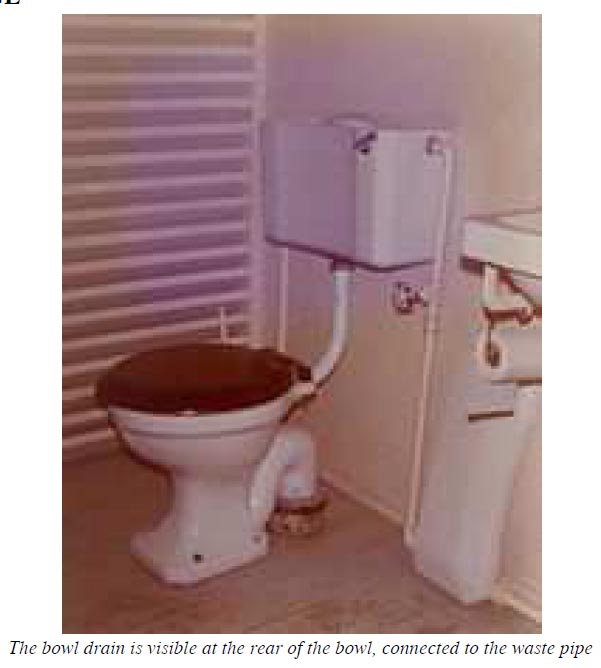
Various forms of flush toilets have become widely used in modern
times The amount of water used by modern toilets is a significant
portion of personal water usage, totaling as much as about 90 liters
(24 US gal) of water per capita per day.
When a toilet is flushed, the water flows into a
sewage system and eventually ends in a
water treatment plant. Here the
water is cleaned, sanitized and possibly re-used.
Modern
low flush toilet
designs allow the use of much less water per flush—1.6 to 1.2 US
gallons (6.1 to 4.5 L) per flush—but may require the sewage
treatment system be modified for the more
concentrated waste. Dual flush toilets
allow the user to select between a flush for urine or feces saving a
significant amount of water over conventional units. The flush
handle on these toilets is pushed up for one kind of flush and down
for the other. In some places users are encouraged not to flush
after urination. Flush toilets, if plumbed for it, may also use
greywater (water previously used
for washing dishes, laundry and bathing) for flushing rather than
potable water (drinking water).
Some modern toilets pressurize the water in the tank which initiates
flushing action with less water usage. Heads (on ships)
are typically flushed with seawater.
Other toilet types
Pit toilets or pit latrines
A
pit latrine
is a dry toilet system which
collects human excrement and urine
in a pit or trench and ranges from a simple slit trench dug in the
ground to more elaborate systems with seating or squatting pans and
ventilation systems. They are more often used in emergency,
rural and wilderness
areas as well as in the rural or peri-urban areas of much of the
developing world. The waste pit or
trench, in some cases, will be large enough that the reduction in
mass of the contained waste products by the ongoing process of
decomposition allows the pit to be
used for many years before it fills up. When the pit becomes too
full, it may be emptied or the hole covered with earth. Pit latrines
have to be located away from drinking water sources (wells, streams,
etc.) to minimize the possibility of disease spread via
groundwater pollution. Army units
typically use a form of pit toilet when they are in the field and
away from functional sewerage
systems.
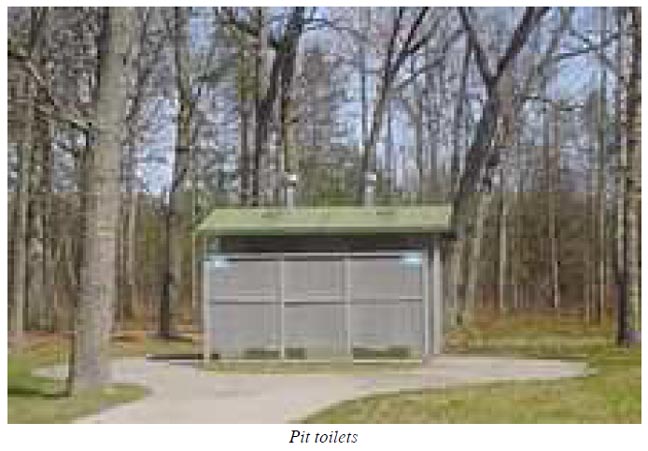
The use of correctly located pit toilets were found to prevent much
of the spread of various diseases which used to kill many more
soldiers than the
bullets and artillery
used in pre-1940 warfare.
Dry toilets
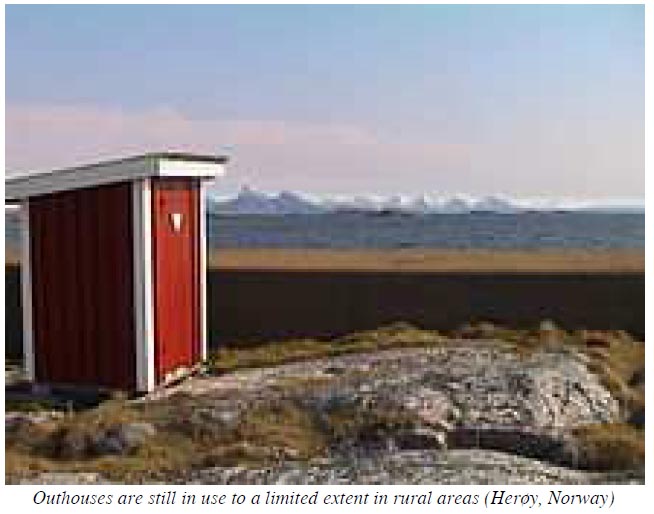
Dry toilets, which use very limited or no
water for flushing include the pit latrine
(a simple hole in the ground, or one with ventilation, fly guards
and other improvements), the composting toilet
(which mixes excrement with carbon rich materials for faster
decomposition), the incinerating toilet
(which burns the excrement), and the tree bog
(a simple system for converting excrement to direct fertiliser for
trees). The pig toilet from the
Indian State of Goa which consists
of an outhouse linked to a pig
enclosure by a chute is still in use to a limited extent but the
subsequent use of the pigs for food carries a significant risk for
human health.
Urine diversion toilets
Urine diversion (UD) toilets have two
compartments. One for urine and one for the feces. A urine diversion
toilet, UD toilet or UDT, flushes one or both compartments with
water. A urine diversion dry toilet
(UDDT) is a form of dry toilet.
UDDTs can be linked to systems which recover water or utilize
treated human excreta as a fertilizer
or biofuel. Astronauts
use a UDDT to recover potable
water in the space station.
Flying toilets
The unsanitary 'flying
toilets' are used in African informal
settlements where plastic shopping bags
are first used as a container for excrement and are then thrown as
far away as possible."
This practice, coupled with the solid waste problem of discarded
plastic bags, has led to the banning of the manufacture and import
of such bags in
Uganda,
Kenya, and Tanzania.
Chemical toilets
Chemical toilets which do not require a
connection to a water supply are used in a variety of situations.
Examples include passenger train toilets
and airplane toilets and also
complicated space toilets for use
in zero-gravity spacecraft.
Public toilets
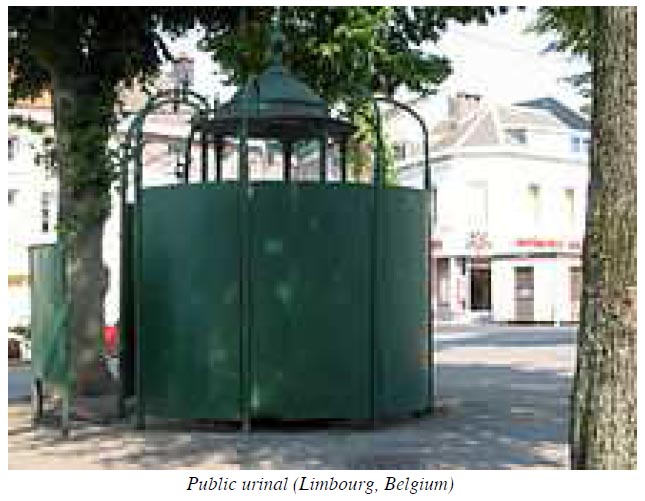
A
public toilet,
frequently called a restroom, is accessible to the general public.
It may be within a building that, while privately owned, allows
public access. Access to a public toilet may require a fee, (pay
toilet), or may be limited to business's
customers.
Depending on culture, there may be varying degrees of separation
between men and women and different levels of privacy. Typically,
the entire room, or a stall or cubicle containing a toilet is
lockable.
Urinals, if present in a men's toilet,
are typically mounted on wall with or without a divider between
them. In the most basic form, a public toilet may be not much more
than an open latrine. Another form
is a street urinal known as a pissoir
after the French term (see Urinal).
In more luxurious variations there may be an
attendant, towels, showers, etc. A fairly
common feature in more modern toilets is an area to change baby
diapers.
A charge levied in the UK during the mid-20th century was one
British penny, hence the generally
adopted term "spend a penny" meaning to use the toilet.
Portable toilets
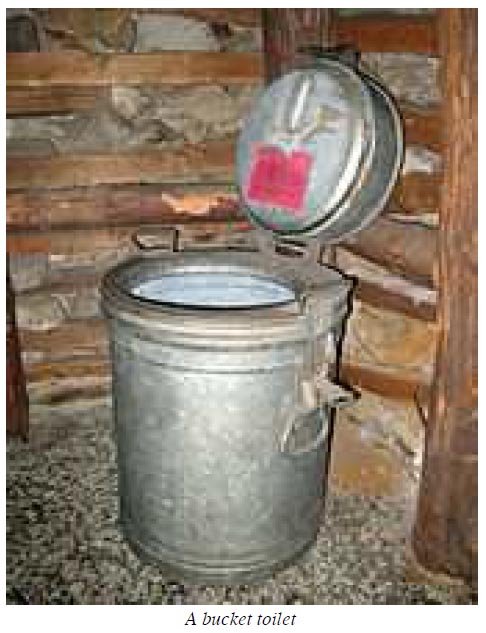
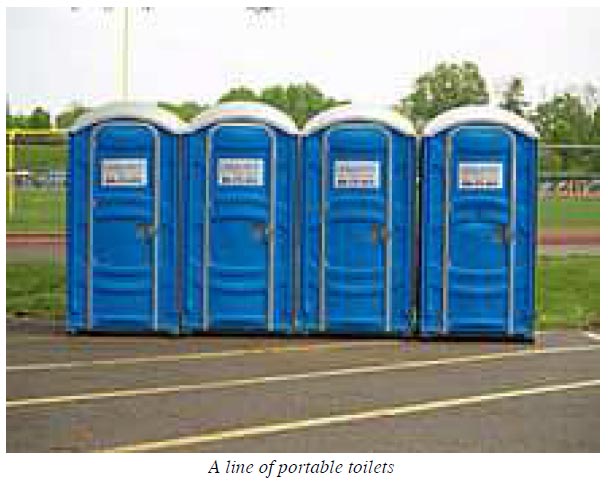
The
portable toilet
is used on construction sites and at large outdoor gatherings where
there are no other facilities. They are typically self-contained
units that are made to be easily moved to different locations as
needed. Most portable toilets are unisex
single units with privacy ensured by a simple lock on the door. The
units are usually light weight and easily transported by a
flatbed truck and loaded and unloaded by
a small forklift. Many portable
toilets are small molded plastic or fiberglass
portable rooms with a lockable door and a receptacle to catch waste
in a chemically treated container. If used for an extended period of
time they have to be cleaned out and new chemicals put in the waste
receptacle. For servicing multiple portable toilets tanker trucks (vacuum
trucks), often called "Honey Trucks", are
equipped with lage vacuums to evacuate the waste and replace the
chemicals.
High-tech toilets
"High-tech" toilets include features such as: automatic-flushing
mechanisms that flush a toilet or urinal when finished; water jets,
or "bottom washers" like a
bidet; blow dryers; artificial flush
sounds to mask noises; and urine and stool analysis for medical
monitoring. Matsushita's "Smart Toilet" checks blood pressure,
temperature, and blood sugar. Some feature automatic lid operation,
heated seats, deodorizing fans or automated paper toilet-seat-cover
replacers. Interactive urinals
have been developed in several countries, allowing users to play
video games as with the "Toylet",
produced by Sega, that uses
pressure sensors to detect the flow of urine and translates it into
on-screen action.
Floating toilets
A floating toilet is essentially an
outhouse built on a platform built above
or floating on the water. Instead of wastes going into the ground
they are collected in a tank or barrel. To reduce the amount of
waste that needs to hauled to shore, many use urine diversion.
It was developed for residents without quick access to land or
connection to a sewer systems. It
is also used in areas subjected to prolonged flooding. The need for
this type of toilet is high in areas like Cambodia where the World
Bank cited in 2008 that nearly 10,000 people died as a result of
poor sanitation.
Chamber pots
A chamber pot is a receptacle in which one would excrete waste in a
ceramic or metal pot. Among
Romans and Greeks,
chamber pots were brought to meals and drinking sessions. Johan J.
Mattelaer said, “Plinius has described how there were large
receptacles in the streets of cities such as Rome
and Pompeii into which chamber
pots of urine were emptied. The urine was then collected by
fullers.” This method was used for
hundreds of years; shapes, sizes, and decorative variations changed
throughout the centuries. This method is no longer used in developed
countries, with the exception of hospital bedpans.
Before the introduction of flush toilets it was common for people to
use a
chamber pot
at night and then to dispose of the 'nightsoil'
in the morning; this practice (known as slopping out)
continued in prisons in the United Kingdom until recently and is
still in use in the Republic of Ireland. The garderobe
was used in medieval times, and replaced by the privy midden
and pail closet in early
industrial Europe.
Garderobes
Garderobes were toilets used in the
Middle Ages, most commonly found in
upper-class dwellings. Essentially, they were flat pieces of wood or
stone spanning from one wall to the other, with one or more holes to
sit on. These would go into pipes that would lead outside the
castle or manor.
Garderobes would be placed in areas away from bedrooms to shun the
smell and also near kitchens or fireplaces to keep the enclosure
warm.
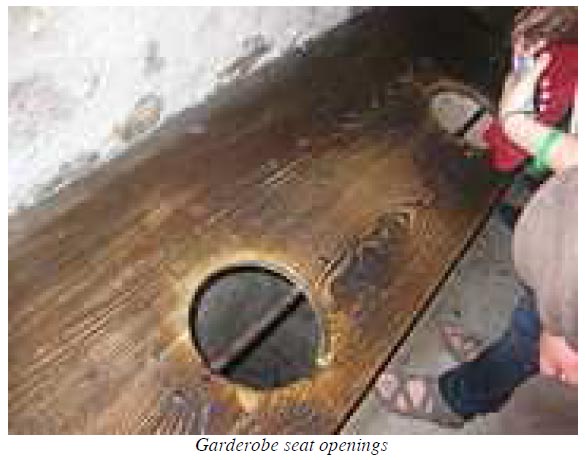
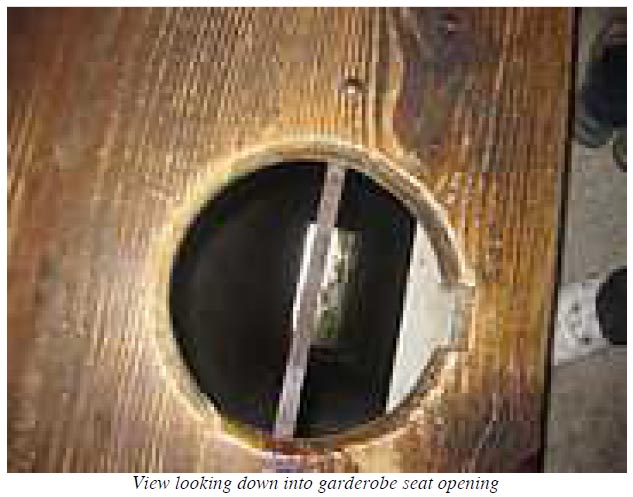
Urinals
Although it is possible for
urinals to be used by females, they were
originally designed for males. They are intended for the disposal of
liquid waste, not solid waste. Urinals are meant to be used for the
convenience of male users in a standing position. They typically
have no door or stall enclosure, and thus take up less space. These
fixtures are most commonly found in public places, but can
occasionally be found in a private home. Urinals are usually water
flushed, although waterless urinals
are also becoming more popular particularly in countries where
conserving water resources is aimed for, like in Germany for
example.

Squat toilets
The squat toilet (also called “squatter” or “squatty-potty”)
consists of a hole in the ground. However, common modern versions
flush like a modern seated toilet, and are not to be compared to a
contemporary portable toilet with no plumbing. To use this toilet,
one is in a squatting position rather than sitting, by placing one
foot on each side of the toilet and squatting over it. Modern
versions are in separate stalls when they are in public lavatories,
and include toilet tissue rolls for the user's convenience. The
squatting method is accompanied by advantages as well
health benefits that connect to easiness
of procedures such as child birth. The squat toilet is most commonly
found in Asia, Africa, and the Middle East but can also occasionally
be found in some European (Romania, France), Mediterranean, and
South American countries.
Role of sanitation
Toilets are one important element of a
sustainable sanitation system. Diseases,
including cholera, which still
affects some 3 million people each year, can be largely prevented
when effective sanitation and
water treatment prevents fecal matter from contaminating
waterways, groundwater
and drinking water supplies.
Infected water supplies can be treated to make the water safe for
consumption and use. There have been five main cholera
outbreaks and pandemics since 1825. In
London alone, the second killed
14,137 people in 1849, and the third
took 10,738 lives in 1853-54. In 1849 the English physician
John Snow published a paper On the
Mode of Communication of Cholera, in which he suggested that
cholera might be waterborne. During the 1854 epidemic, he collected
and analyzed data establishing that people who drank water from
contaminated sources such as the Broad Street pump
died of cholera at much higher rates than those who got water
elsewhere.
To this day, many people in developing countries have no toilets in
their homes and are resorting to
open defecation instead. The Joint
Monitoring Programme (JMP) for Water Supply and Sanitation
by WHO and UNICEF is the official United Nations mechanism tasked
with monitoring progress towards the Millennium Development Goal (MDG)
relating to drinking-water and sanitation (MDG 7, Target 7c), which
is to: "Halve, by 2015, the proportion of people without sustainable
access to safe drinking-water and basic sanitation" and publishes
figures on access to sanitation worldwide on a regular basis.

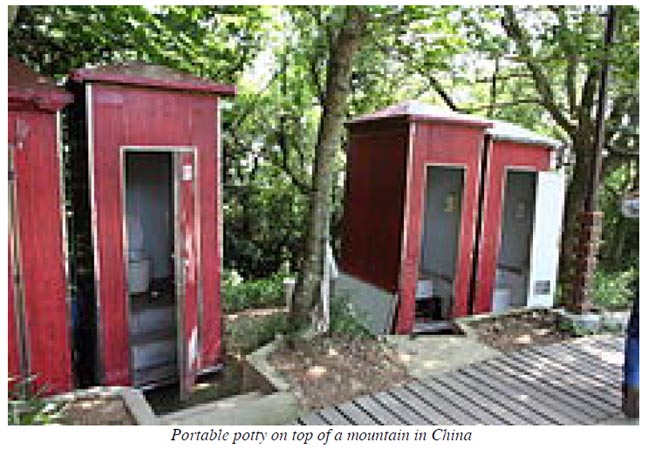
Toilet
The word toilet came to be used in English along with other French
fashions. It originally referred to the toile, French for
"cloth", draped over a lady or gentleman's shoulders while their
hair was being dressed, and then (in both French and English) by
extension to the various elements, and also the whole complex of
operations of
hairdressing and body care that centered
at a dressing table, also covered by a cloth, on which stood a
mirror and various brushes and containers for powder and make-up:
this ensemble was also a toilette,
as also was the period spent at the table, during which close
friends or tradesmen were often received. The English poet
Alexander Pope in The Rape of
the Lock (1717) described the
intricacies of a lady's preparation.
The word toilet may also be used, especially in
British English to describe the
room containing the fixture, for which
euphemisms such as restroom
or bathroom are used in American English.
Prior to the introduction of modern flush toilets, most human waste
disposal was done through the use of household chamber pots,
or took place outdoors in outhouses
or latrines. Pail closets
were introduced in England and France in an attempt to reduce sewage
problems in rapidly expanding cities.
|
“ |
And now, unveil'd, the toilet stands display'd
Each silver vase in mystic order laid. |
” |
These various senses are first recorded by the
OED
in rapid sequence in the later 17th century: the set of "articles
required or used in dressing" 1662, the "action or process of
dressing" 1681, the cloth on the table 1682, the cloth round the
shoulders 1684, the table itself 1695, and the "reception of
visitors by a lady during the concluding stages of her toilet" 1703
(also known as a "toilet-call"), but in the sense of a special room
the earliest use is 1819, and this does not seem to include a
lavatory.
Through the 18th century, everywhere in the English-speaking world,
these various uses centred around a lady's draped dressing-table
remained dominant. In the 19th century, apparently first in the
United States, the word was adapted as a genteel euphemism for the
room and the object as we know them now, perhaps following the
French usage cabinet de toilette, much as powder-room
may be coyly used today, and this has been linked to the
introduction of public toilets, for example on railway
trains, which required a plaque on the
door. The original usages have become obsolete, and the table has
become a dressing-table.
Vestiges of the original meaning continue to be reflected in terms
such as toiletries,
eau de toilette
and toiletry bag (to carry flannels, soaps, etc.). This
seemingly contradictory terminology has served as the basis for
various parodies e.g.
Cosmopolitan
magazine ("If it doesn't say 'eau de toilette' on the label, it most
likely doesn't come from the famed region of Eau de Toilette in
France and might not even come from toilets at all.")
The word toilet itself may be considered an impolite word in
Anglophone North America, while elsewhere the word is used without
any embarrassment. The choice of the word used instead of toilet
is highly variable, not just by regional
dialect
but also, at least in Britain, by class
connotations. Nancy Mitford wrote
an essay out of the choice of wording; see U and non-U
English. Some manufacturers show this
uneasiness with the word and its class attributes: American
Standard, the largest manufacturer, sells
them as "toilets", yet the higher priced products of the
Kohler Company, often installed in more
expensive housing, are sold as commodes
or closets, words which also carry other meanings.
Confusingly, products imported from Japan such as TOTO
are referred to as "toilets", even though they carry the cachet of
higher cost and quality. When referring to the room or the actual
piece of equipment, the word toilet is often substituted with
other euphemisms and
dysphemisms (See toilet humor).
As old euphemisms have become accepted, they have been progressively
replaced by newer ones, an example of the
euphemism treadmill at work. The choice
of word used to describe the room or the piece of plumbing relies as
much on regional variation (dialect)
as on social situation and level of formality (register).
Lavatory
The term lavatory, abbreviated in slang to lav, derives from the
Latin:
lavātōrium,
which in turn comes from Latin
lavō
("I wash"). The word was originally used to refer to a vessel for
washing, such as a
sink/wash
basin, but eventually came to mean a room
with such washing vessels, as for example in medieval monasteries,
where the lavatorium was the
monks' communal washing area. The toilets in monasteries however
were not in the lavatorium but in the reredorter.
Nevertheless the word was later associated with toilets and the
meaning evolved into its current one, namely a polite and formal
euphemism for a toilet and the room containing it. Lavatory is the
common signage for toilets on
commercial airlines around the world, see Aircraft lavatory.
Loo
The origin of the (chiefly British) term loo is unknown. According
to the OED, the etymology is obscure, but it might derive from the
word Waterloo. The first recorded entry is in fact from
James Joyce's Ulysses
(1922): "O yes, mon loup. How much cost? Waterloo. Watercloset".
Other theories are:
-
That it derives from
the term "gardyloo" (a corruption of the French phrase gardez
l'eau! (or maybe garde l'eau!) loosely translated as
"watch out for the water!") which was used in
medieval
times when
chamber pots
were emptied from a window onto the street. However the first
recorded usage of "loo" comes long after this term became
obsolete.
-
That the word comes
from
nautical
terminology, loo being an old-fashioned word for
lee.
The standard nautical pronunciation (in
British English)
of leeward is looward. Early ships were not fitted
with toilets but the crew would urinate over the side of the
vessel. However it was important to use the leeward side. Using
the
windward
side would result in the urine blown back on board: hence the
phrases 'pissing into the wind' and 'spitting into the wind'.
Even now most yachtsmen refer to the loo rather than
the
heads.
-
That the word derives
from the 17th century preacher
Louis Bourdaloue. Bourdaloue's
sermons at the Saint Paul-Saint Louis Church in Paris lasted at
least three hours and myth has it that wealthier ladies took
along "travelling"
chamber pots
that could be hidden under their dresses whenever the need arose
to avoid the need to leave. Due to the popularity of the myth
the bowls became known as Bourdaloues after the preacher and the
name became corrupted to portaloos and sometimes just plain loos
due to the habit of shortening words in slang.
-
That the word comes
from the French word lieu (place), as in lieu
d'aisance (literally: "place of ease", a common euphemism
for lavatory) or lieu à l'anglaise (literally: "English
place"). From around 1770 the term lieu à l'anglaise
began to appear in France, referring to this English invention
which was sometimes installed for the benefit of English
visitors. (Ashenburg p. 138)
WC
The WC refers to the initial letters of
Water Closet, which, despite being an
English language abbreviation, is not in common use in
English-speaking countries – but is widely used internationally: in
France (pronounced "le vay-say" or "le vater"), in Italy (pronounced
"vi-ci" or "vater"), Romania (pronounced "veh-cheu"), the
Netherlands (pronounced "waysay"), Germany, Switzerland and Hungary
(pronounced "ve-tse"), Denmark (pronounced "ve-se"), Norway
(pronounced "vay-say"), Poland (pronounced "vu-tse"), Spain
(pronounced "uve-cé" or "váter"), China, and others.
Other
Lexicographer Eric Partridge
derives khazi, also spelt karzy,
kharsie or carzey, from a low Cockney
word carsey originating in the late 19th century and meaning
a privy. Carsey also referred to a den or brothel.
It is presumably derived from the Italian casa for house,
with the spelling influenced by its similar sound to khaki. Khazi is
now most commonly used in the city of Liverpool
in the UK, away from its cockney slang roots. An alternative
derivation is from Christopher Chippindale, who States that khazi
derives from Army slang used by expatriate officers of the British
Empire who took a dislike to the habits of, and steaming rain forest
inhabited by, the Khasi people of
the Khasia hills on the northern frontier of India.
The
Dunny
is an Australian expression for an outside toilet or outhouse.
The person who appeared weekly to empty the pan beneath the seat was
known as the "dunnyman". The word derives from the British dialect
word dunnekin, meaning "dung-house". It is now an informal
word used for any lavatory and is most often used referring to drop
or pit lavatories in the Australian bush,
which are also called thunderboxes.
The Privy is an old fashioned term used more in the North of England
and in Scotland; "privy" is an old alternative for "private", as in
Privy council.
It is used interchangeably in North America for various terms for
the outhouse.
The netty is the most common word used in North East England. Many
outsiders are often bemused when a
Geordie or a Mackem
States they are "gannin te the netty" (going to the bathroom). The
etymology of the word is uncertain, but it is believed to be either
derived from a corruption of "necessity" or from graffiti scrawled
on Hadrian's Wall. It is linked to
the Italian word gabinetti meaning "toilets" (singular
gabinetto).
Latrine is a term common in the military,
specifically for the Army and Air Force for any point of entry
facility where human waste is disposed of, which a civilian might
call a bathroom or toilet, regardless of how modern or primitive it
is. Traditionally the Royal Navy along with the United States Navy
and Marine Corps use the nautical term "Head"
to describe the same type of facility, regardless of whether it is
located on a ship or on the land.
The Jacks is Irish slang for toilet. It perhaps derives from
"jakes", an old English term.
The standalone toilet enclosure has been variously known as a "back
house", "house of ease", "house of office", "little house", or "outhouse".
The house of office was a common name for a toilet in seventeenth
century England, used by, among others, Samuel Pepys
on numerous occasions: October 23, 1660: ...going down into my
cellar..., I put my foot into a great heap of turds, by which I find
Mr Turner's house of office is full and comes into my cellar.
In the
Philippines
the abbreviation CR (Comfort Room) is commonly used.
Culture
There are many different ways to
clean oneself after using the toilet,
depending on national mores and
local resources. An important part of early childhood
education is toilet training.
In the
Western world,
the most common method of cleaning after using a toilet is by
toilet paper or sometimes by using a
bidet. In the Middle East and some
countries in Asia, and South Asian countries such as India and
Pakistan, the custom is to use water, either with or without toilet
paper. Traditionally, the left hand is used for this, for which
reason that hand is considered impolite or polluted in many Eastern
countries. The Islamic faith has a particular code,
Qaḍā al-Ḥājah describing
Islamic toilet etiquette.
Toilet humour is a name given to a type
of off-colour humour dealing with
defecation, urination,
and flatulence.
Standing
vs.
sitting
A systematic review
meta-analysis on the effect of voiding
position on the quality of urination found that in elderly males
with benign prostate hyperplasia,
the sitting position was superior compared with the standing.
Healthy males were not influenced by voiding position. A literature
review found cultural differences in socially accepted voiding
positions around the world found many differences in preferred
position: in the Middle-East and Asia, the crouching position was
more prevalent, while in the Western world the standing and sitting
position was more common. These findings mean that in the decision
of choosing between different toilets, factors about health and
social acceptance need to be considered.
|